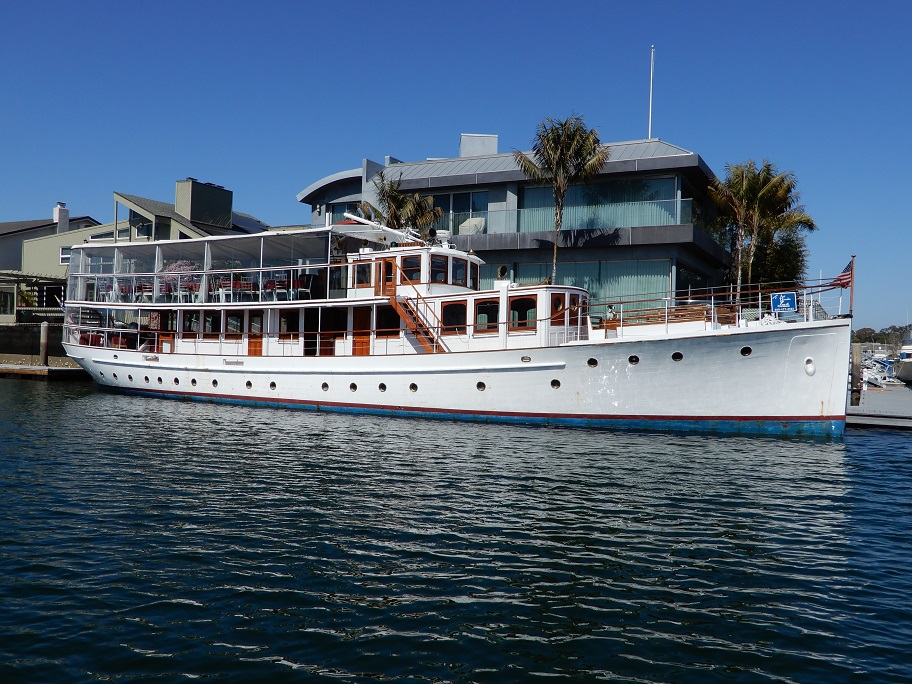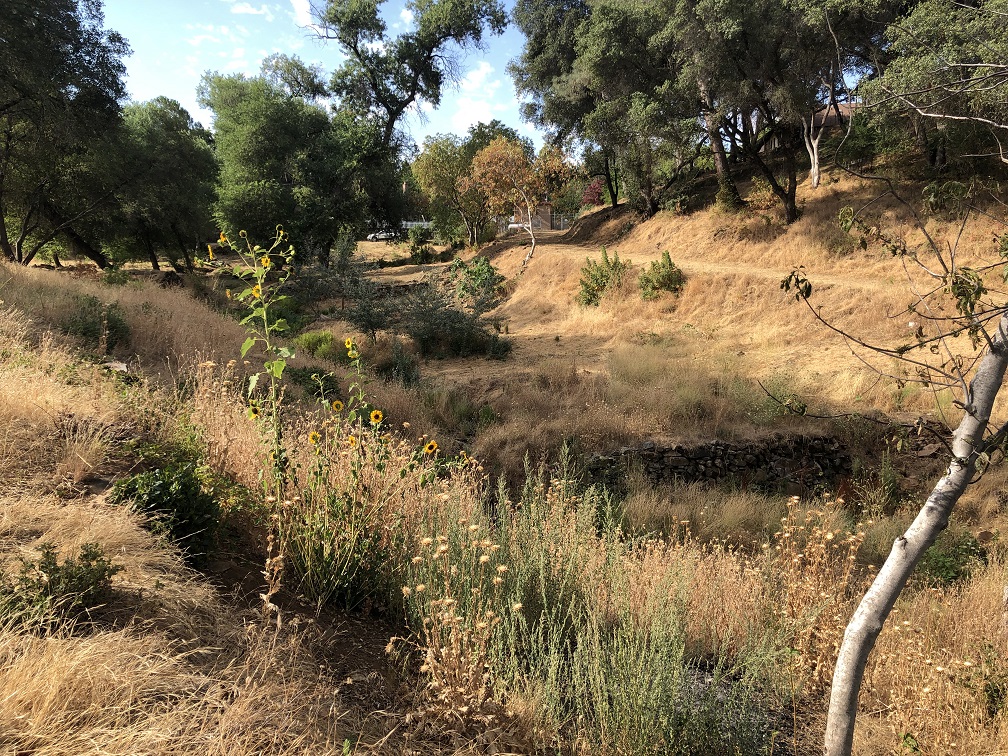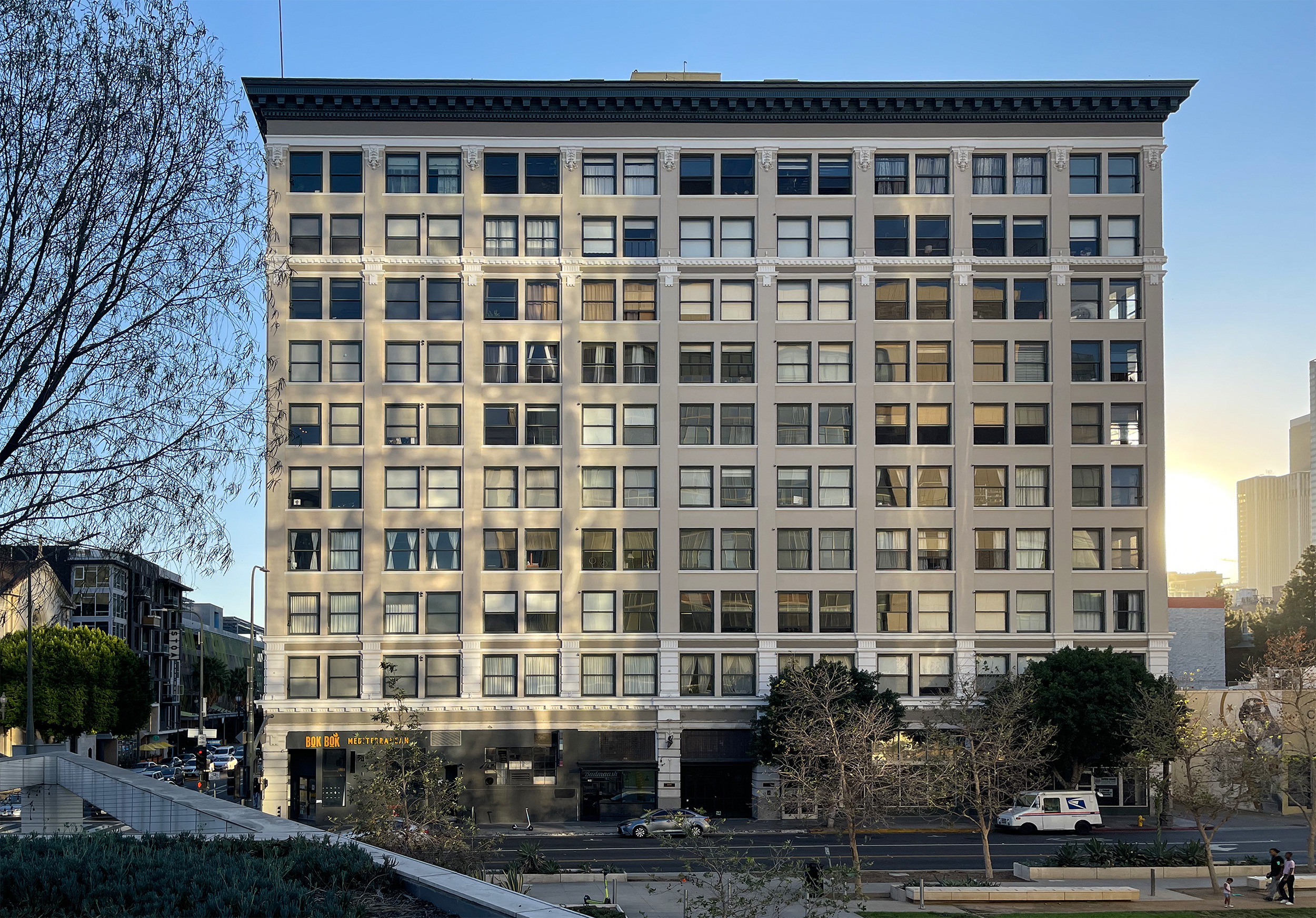2023 Actions Taken
2023 Actions Taken
The nominations below were reviewed by the State Historical Resources Commission during the year 2023. Scroll down to view subsequent actions by quarter. Agendas from past meetings are downloadable in PDF format on the Past Agendas page.
January 20, 2023 SHRC Meeting
The following properties were reviewed at the January 20, 2023 SHRC Meeting, held virtually via Zoom and CAL-SPAN.
Properties nominated to the National Register of Historic Places
Electra Designed by master naval architect Leslie Edward “Ted” Geary and launched in 1930, at over ninety-six feet length, Electra embodies the distinct characteristics of a luxurious plumb bow, narrow beam, fantail yacht of the early twentieth century. Constructed of Alaskan golden cedar with oak frames, and finished with teak decking with brass brightwork, stained glass, and stately interiors, Electra illustrates the craftsmanship and skill of Pacific Coast yacht builders of the era.
Chinatown Gardens Archaeological District, situated on the northeast edge of Mokelumne Hill’s historic Chinatown in Calaveras County, encompasses the archaeological remains of a commercial market garden operated by the town’s Chinese residents between the 1850s and 1898, a small residence area, and the community’s Buddhist Temple. As the only known extant such Chinese garden in California, the district represents a unique association with Chinese commercial agriculture and offers information potential on agricultural methods and the lifeways of the gardens’ caretakers.
 Fudger, Eva K. House is a two-story house of irregular plan, featuring multiple roof planes clad in clay tile, second-story wood balconies, and smooth stucco exterior. The house is situated on a curved portion of the street with a half ellipse shaped lot, adjacent to the Wilshire Country Club golf course in the Hancock Park area of Los Angeles. The 1926 house is an important example by master architect Roland E. Coate and an excellent representation of the Spanish Colonial Revival/Monterey Revival style.
Fudger, Eva K. House is a two-story house of irregular plan, featuring multiple roof planes clad in clay tile, second-story wood balconies, and smooth stucco exterior. The house is situated on a curved portion of the street with a half ellipse shaped lot, adjacent to the Wilshire Country Club golf course in the Hancock Park area of Los Angeles. The 1926 house is an important example by master architect Roland E. Coate and an excellent representation of the Spanish Colonial Revival/Monterey Revival style.
 Fullerton College Historic District was planned, laid out, and constructed using Public Works Administration, then Work Projects Administration funding, from 1935 to 1942. Master landscape architect Ralph D. Cornell developed the formal college campus layout following Thomas Jefferson’s University of Virginia plan, with the historic core of the campus consisting of rectangular-shaped classrooms and administrative buildings arranged in axial fashion around an inverse T-shaped central library. In designing the college buildings, resident architect Harry K. Vaughn wanted an architectural style different from the adjacent Spanish Colonial Revival style high school, and he combined Spanish elements with Moorish features to create a Hispano Moresque style unique to Fullerton.
Fullerton College Historic District was planned, laid out, and constructed using Public Works Administration, then Work Projects Administration funding, from 1935 to 1942. Master landscape architect Ralph D. Cornell developed the formal college campus layout following Thomas Jefferson’s University of Virginia plan, with the historic core of the campus consisting of rectangular-shaped classrooms and administrative buildings arranged in axial fashion around an inverse T-shaped central library. In designing the college buildings, resident architect Harry K. Vaughn wanted an architectural style different from the adjacent Spanish Colonial Revival style high school, and he combined Spanish elements with Moorish features to create a Hispano Moresque style unique to Fullerton.
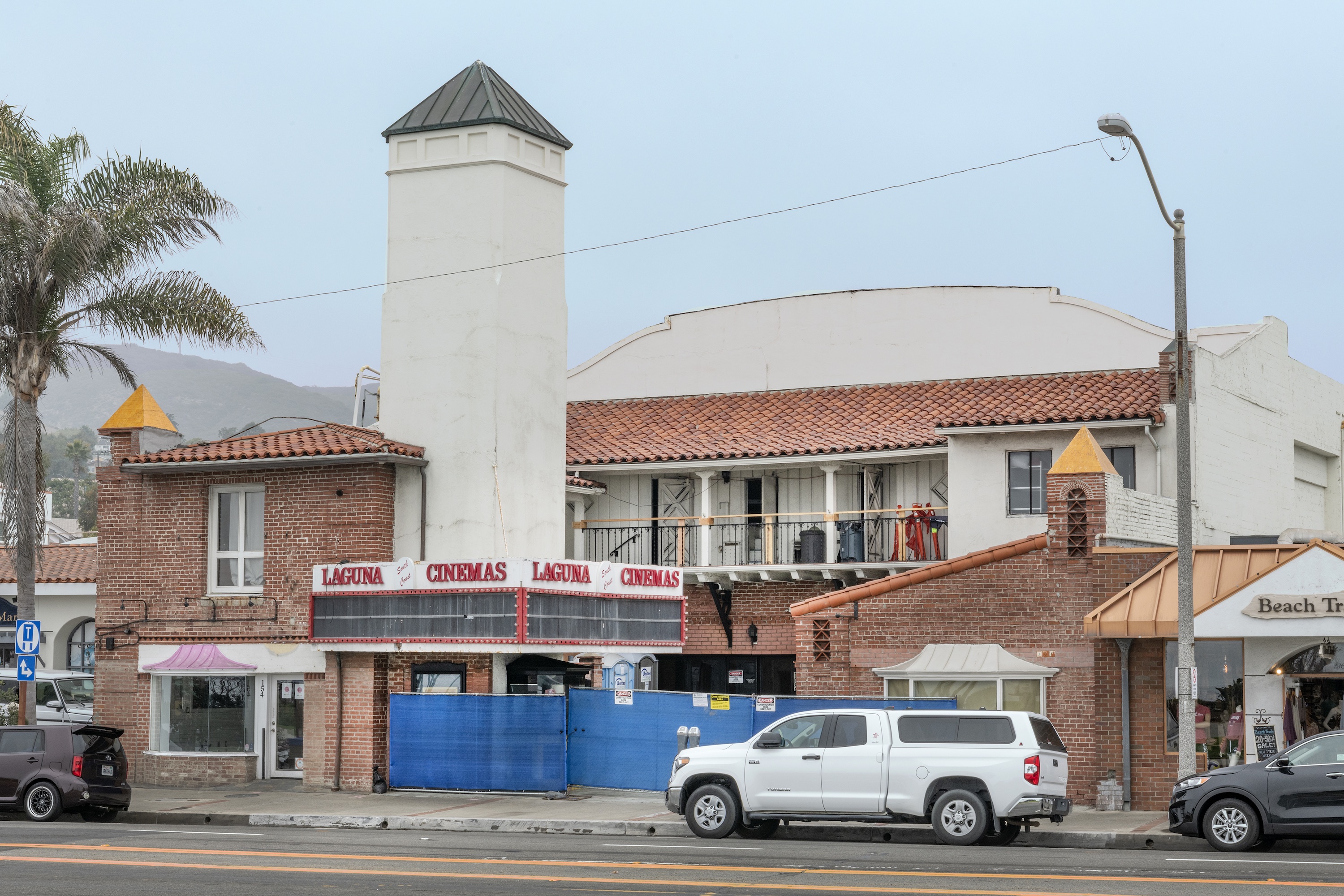 New Lynn Theater in Laguna Beach’s downtown neighborhood is a two-story movie theater designed by architect James Conway in the Mediterranean Revival architectural style. The New Lynn Theater is part of a legacy of movie theaters created by the Aufdenkamp family. Since construction in 1935, the theater was a source of entertainment for the local community until its closure in 2015. The building represents one of the extant contributions of the Aufdenkamp family, who largely pioneered entertainment in Laguna Beach. The theater is most representative of patriarch Fred Aufdenkamp, who helped to establish the downtown Laguna Beach business community and operated the theater when it opened.
New Lynn Theater in Laguna Beach’s downtown neighborhood is a two-story movie theater designed by architect James Conway in the Mediterranean Revival architectural style. The New Lynn Theater is part of a legacy of movie theaters created by the Aufdenkamp family. Since construction in 1935, the theater was a source of entertainment for the local community until its closure in 2015. The building represents one of the extant contributions of the Aufdenkamp family, who largely pioneered entertainment in Laguna Beach. The theater is most representative of patriarch Fred Aufdenkamp, who helped to establish the downtown Laguna Beach business community and operated the theater when it opened.
 Stone Hotel in Daggett, San Bernardino County, is an 1883 false-front building with stone walls, originally built as an eating house and adjacent 1908 Thistle General Merchandise Store. Stone Hotel was an eating house and railroad hotel located adjacent to Southern Pacific Railroad's main line. Before the introduction of dining cars in railroad passenger service, eating houses were essential stops on passenger railroads, where patrons could disembark the train and quickly consume a meal before continuing their journey. The hotel is also associated with two significant individuals; innkeeper Aaron Williams, and frequent regular patron Walter Scott, better known as Death Valley Scotty.
Stone Hotel in Daggett, San Bernardino County, is an 1883 false-front building with stone walls, originally built as an eating house and adjacent 1908 Thistle General Merchandise Store. Stone Hotel was an eating house and railroad hotel located adjacent to Southern Pacific Railroad's main line. Before the introduction of dining cars in railroad passenger service, eating houses were essential stops on passenger railroads, where patrons could disembark the train and quickly consume a meal before continuing their journey. The hotel is also associated with two significant individuals; innkeeper Aaron Williams, and frequent regular patron Walter Scott, better known as Death Valley Scotty.
Properties nominated as Points of Historical Interest
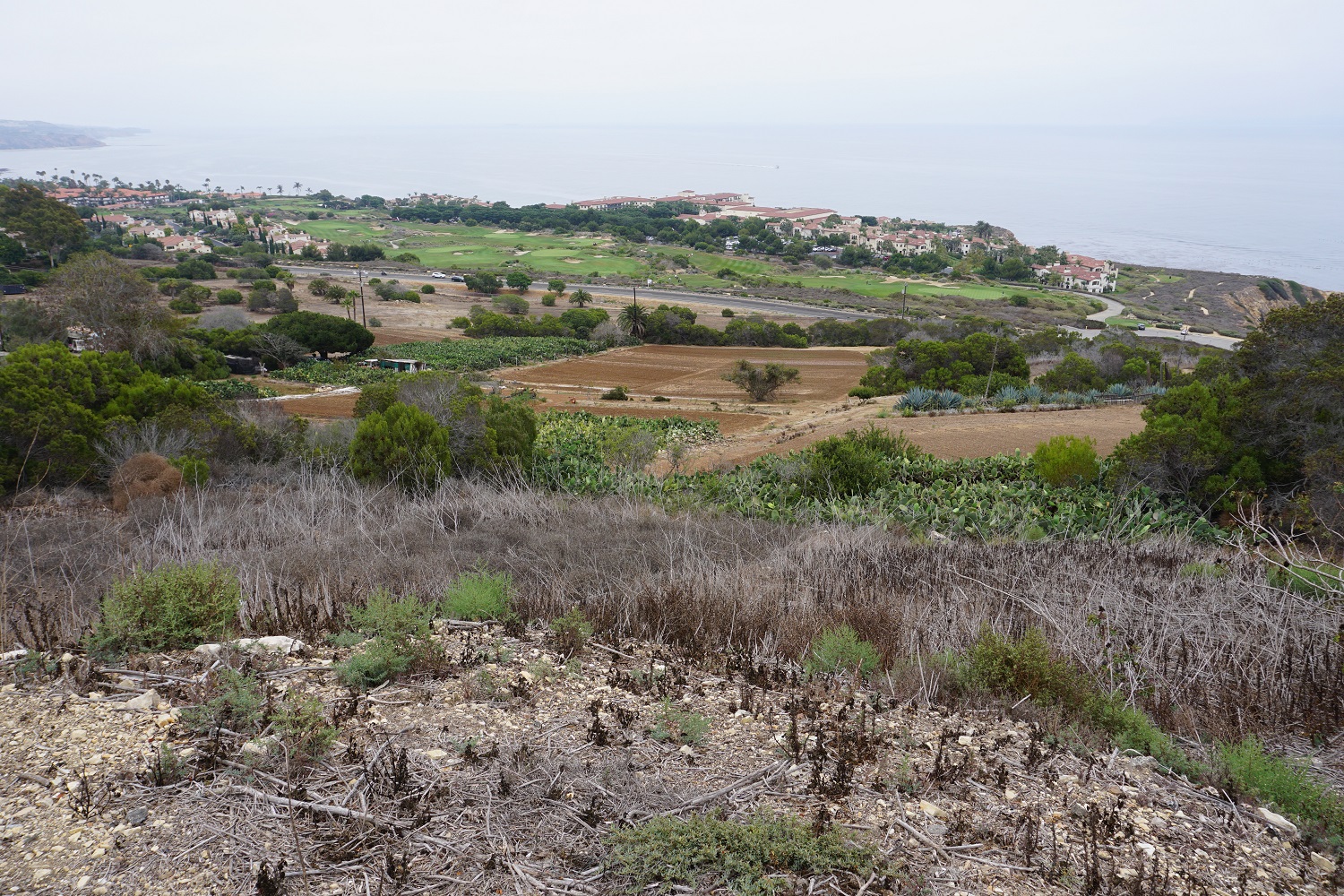 Hatano Farm is nominated for listing as a California Point of Historical Interest for its association with the Japanese American farming tradition of the Palos Verdes Peninsula, as an example of the postwar movement and settlement of Japanese Americans, and as one of the few remaining flower farms in Los Angeles County. Established in 1953, Hatano Farm continued the longstanding tradition of Japanese American flower farming on the peninsula. Although Hatano Farm does not date back to the period before World War II, it is the nature of the Japanese experience that led to its establishment there a decade later. During their incarceration at Poston, several peninsula farmers bunked with the Hatano family, eventually inspiring them to relocate their farming efforts from Northern to Southern California. James Hatano and his family settled in the South Bay and continued the Japanese American farming legacy there.
Hatano Farm is nominated for listing as a California Point of Historical Interest for its association with the Japanese American farming tradition of the Palos Verdes Peninsula, as an example of the postwar movement and settlement of Japanese Americans, and as one of the few remaining flower farms in Los Angeles County. Established in 1953, Hatano Farm continued the longstanding tradition of Japanese American flower farming on the peninsula. Although Hatano Farm does not date back to the period before World War II, it is the nature of the Japanese experience that led to its establishment there a decade later. During their incarceration at Poston, several peninsula farmers bunked with the Hatano family, eventually inspiring them to relocate their farming efforts from Northern to Southern California. James Hatano and his family settled in the South Bay and continued the Japanese American farming legacy there.
April 21, 2023 SHRC Meeting
The following properties were reviewed at the April 21, 2023 SHRC meeting, held in San Francisco, San Francisco County.
Properties nominated to the National Register of Historic Places
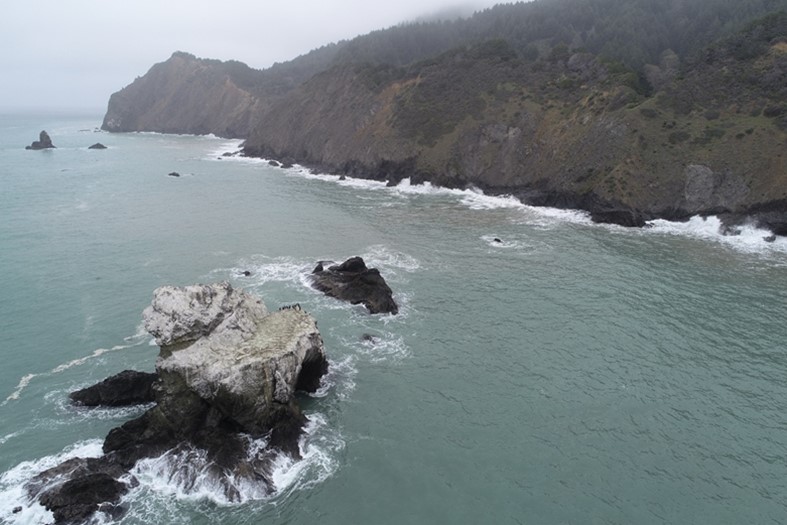 Bear Harbor Landing Historical and Archaeological District encompasses 721 acres along the Mendocino County coast, associated with the California timber trade and maritime commerce through the use of the area as a doghole port. A unique solution of chutes and cable systems, known regionally and colloquially as doghole ports, extended from the Sonoma and Mendocino County bluffs down into small coves, allowing lumber and produce to be transferred from cliffs above to waiting ships moored some distance from the rocky shore. The interrelated components of the timber industry and Bear Harbor community were dependent on the doghole port’s location and means to load vessels safely and efficiently.
Bear Harbor Landing Historical and Archaeological District encompasses 721 acres along the Mendocino County coast, associated with the California timber trade and maritime commerce through the use of the area as a doghole port. A unique solution of chutes and cable systems, known regionally and colloquially as doghole ports, extended from the Sonoma and Mendocino County bluffs down into small coves, allowing lumber and produce to be transferred from cliffs above to waiting ships moored some distance from the rocky shore. The interrelated components of the timber industry and Bear Harbor community were dependent on the doghole port’s location and means to load vessels safely and efficiently.
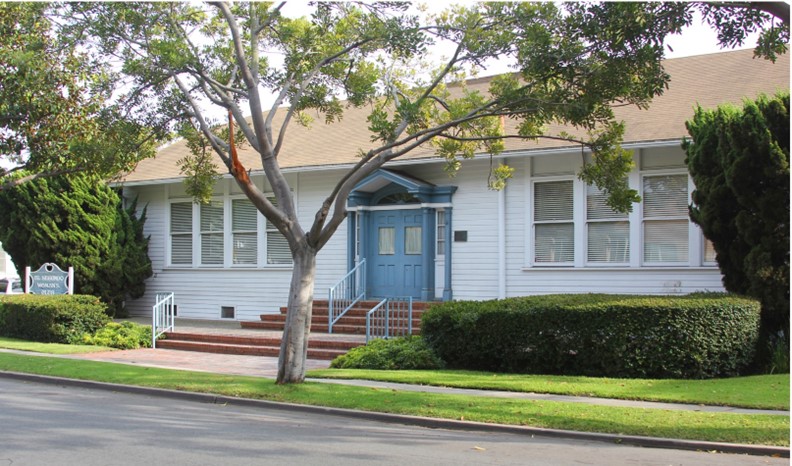 El Segundo Woman’s Club was founded in 1922 to promote civic, educational, and philanthropic interest in the community. In 1936, the club purchased the former El Segundo Schoolhouse for use as their clubhouse, an approximately 4,000 square-foot timber framed building constructed in 1912 and transported to this location in 1937. El Segundo Woman’s Club remains the only organization of its kind in the City of El Segundo and continues to carry on the philanthropic and civic initiatives that have distinguished the organization since its founding.
El Segundo Woman’s Club was founded in 1922 to promote civic, educational, and philanthropic interest in the community. In 1936, the club purchased the former El Segundo Schoolhouse for use as their clubhouse, an approximately 4,000 square-foot timber framed building constructed in 1912 and transported to this location in 1937. El Segundo Woman’s Club remains the only organization of its kind in the City of El Segundo and continues to carry on the philanthropic and civic initiatives that have distinguished the organization since its founding.
_0002.jpg) Kelso Depot, Restaurant and Employees Hotel (Boundary Increase II) is located in the railroad community of Kelso within Mojave National Preserve. As listed on the National Register in 2001, the 1.95-acre property comprised the Kelso Depot, Restaurant and Employees Hotel, the Coal and Supply Shed, and the designed landscape. A boundary increase approved in 2019 increased the district to seven acres to include six additional contributing buildings and a structure associated with the community that developed around the hotel. This second boundary increase enlarges the district to thirteen acres and encompasses five additional contributing structures associated with water conveyance in the district.
Kelso Depot, Restaurant and Employees Hotel (Boundary Increase II) is located in the railroad community of Kelso within Mojave National Preserve. As listed on the National Register in 2001, the 1.95-acre property comprised the Kelso Depot, Restaurant and Employees Hotel, the Coal and Supply Shed, and the designed landscape. A boundary increase approved in 2019 increased the district to seven acres to include six additional contributing buildings and a structure associated with the community that developed around the hotel. This second boundary increase enlarges the district to thirteen acres and encompasses five additional contributing structures associated with water conveyance in the district.
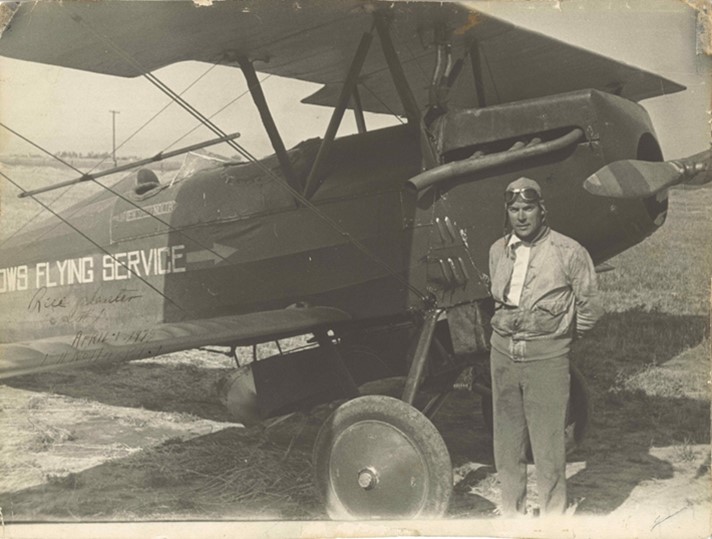 Willows-Glenn County Airport is a 320-acre general aviation airport on the western edge of the city of Willows, the Glenn County seat. Contributing resources include three multi-plane hangars and the former Airport Administration Building, the paved flight apron, and a steel tower with rotating beacon. Constructed in 1928 as an Intermediate Landing Field along the Seattle to Los Angeles Air Mail route, the airport was used by the U.S. Army Air Forces during World War II. In 1956, the property became the base of operations for the first air tanker squad to be formed in the United States—a squad composed primarily of veterans, and their biplanes—to fight forest fires from the air.
Willows-Glenn County Airport is a 320-acre general aviation airport on the western edge of the city of Willows, the Glenn County seat. Contributing resources include three multi-plane hangars and the former Airport Administration Building, the paved flight apron, and a steel tower with rotating beacon. Constructed in 1928 as an Intermediate Landing Field along the Seattle to Los Angeles Air Mail route, the airport was used by the U.S. Army Air Forces during World War II. In 1956, the property became the base of operations for the first air tanker squad to be formed in the United States—a squad composed primarily of veterans, and their biplanes—to fight forest fires from the air.
 Wolf Store and Vail Ranch Headquarters is an approximately four-acre district in Temecula, in the southwest corner of Riverside County, located near the intersection of three Mexican land grant ranchos. Contributing resources include a short segment of the Southern Emigrant Trail, the Wolf Store adobe constructed adjacent to the road in 1867—Temecula’s center of commerce and township administration from 1867 through the mid-1880s—and two circa 1906 Vail Ranch era buildings in the wood framed bungalow Western stick style.
Wolf Store and Vail Ranch Headquarters is an approximately four-acre district in Temecula, in the southwest corner of Riverside County, located near the intersection of three Mexican land grant ranchos. Contributing resources include a short segment of the Southern Emigrant Trail, the Wolf Store adobe constructed adjacent to the road in 1867—Temecula’s center of commerce and township administration from 1867 through the mid-1880s—and two circa 1906 Vail Ranch era buildings in the wood framed bungalow Western stick style.
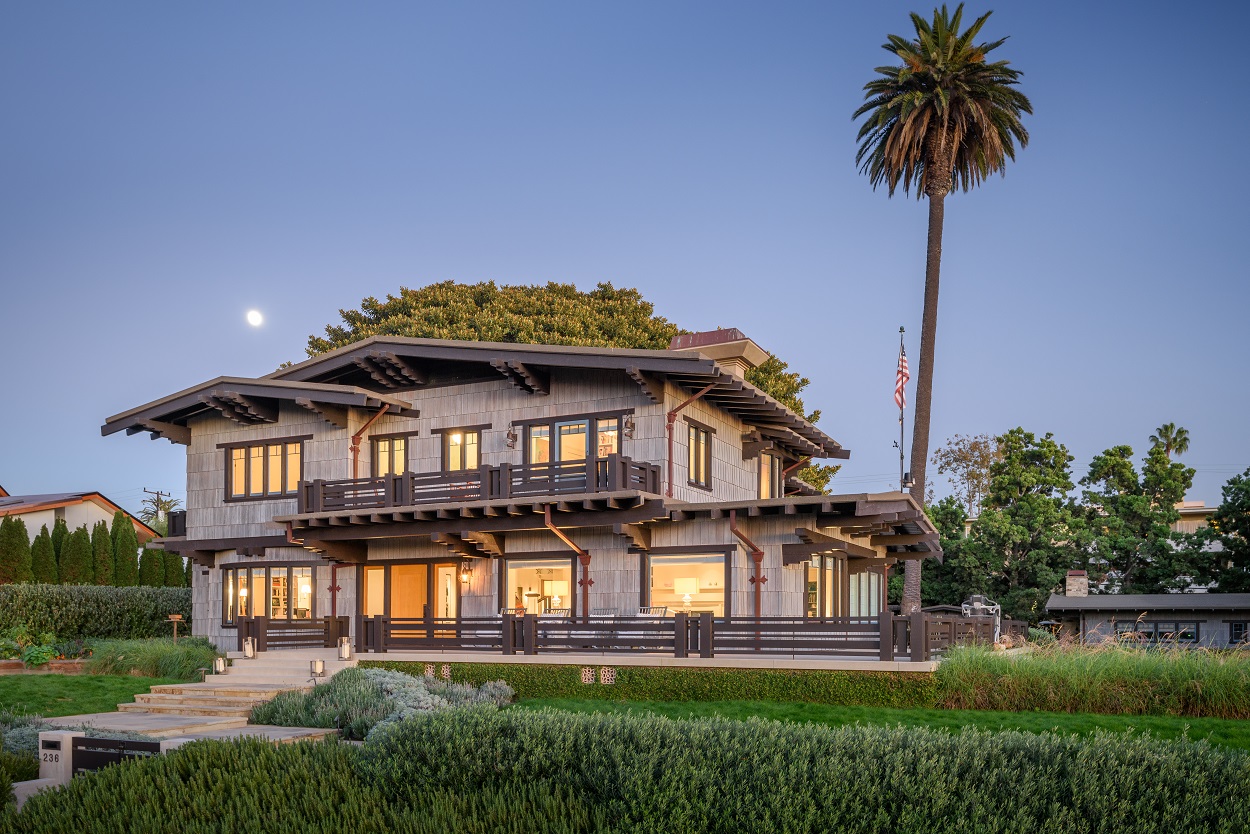 Milbank, Isaac, House is a Santa Monica "Ultimate Bungalow" built and designed by the Milwaukee Building Company, whose principals Mendel Meyer, Julius Schneider, and Philip Holler, had designed the eight residences of Adelaide Drive, the most desirable portion of their Palisades Tract development, with spacious lots and ocean views. The home's first owner, Isaac Milbank, was the son of the co-founder of New York Condensed Milk Company, later known as the Borden Company, and worked as its vice president. This house was Milbank's seasonal residence, and it is principally significant for its architecture, a locally prominent example of the Craftsman style.
Milbank, Isaac, House is a Santa Monica "Ultimate Bungalow" built and designed by the Milwaukee Building Company, whose principals Mendel Meyer, Julius Schneider, and Philip Holler, had designed the eight residences of Adelaide Drive, the most desirable portion of their Palisades Tract development, with spacious lots and ocean views. The home's first owner, Isaac Milbank, was the son of the co-founder of New York Condensed Milk Company, later known as the Borden Company, and worked as its vice president. This house was Milbank's seasonal residence, and it is principally significant for its architecture, a locally prominent example of the Craftsman style.
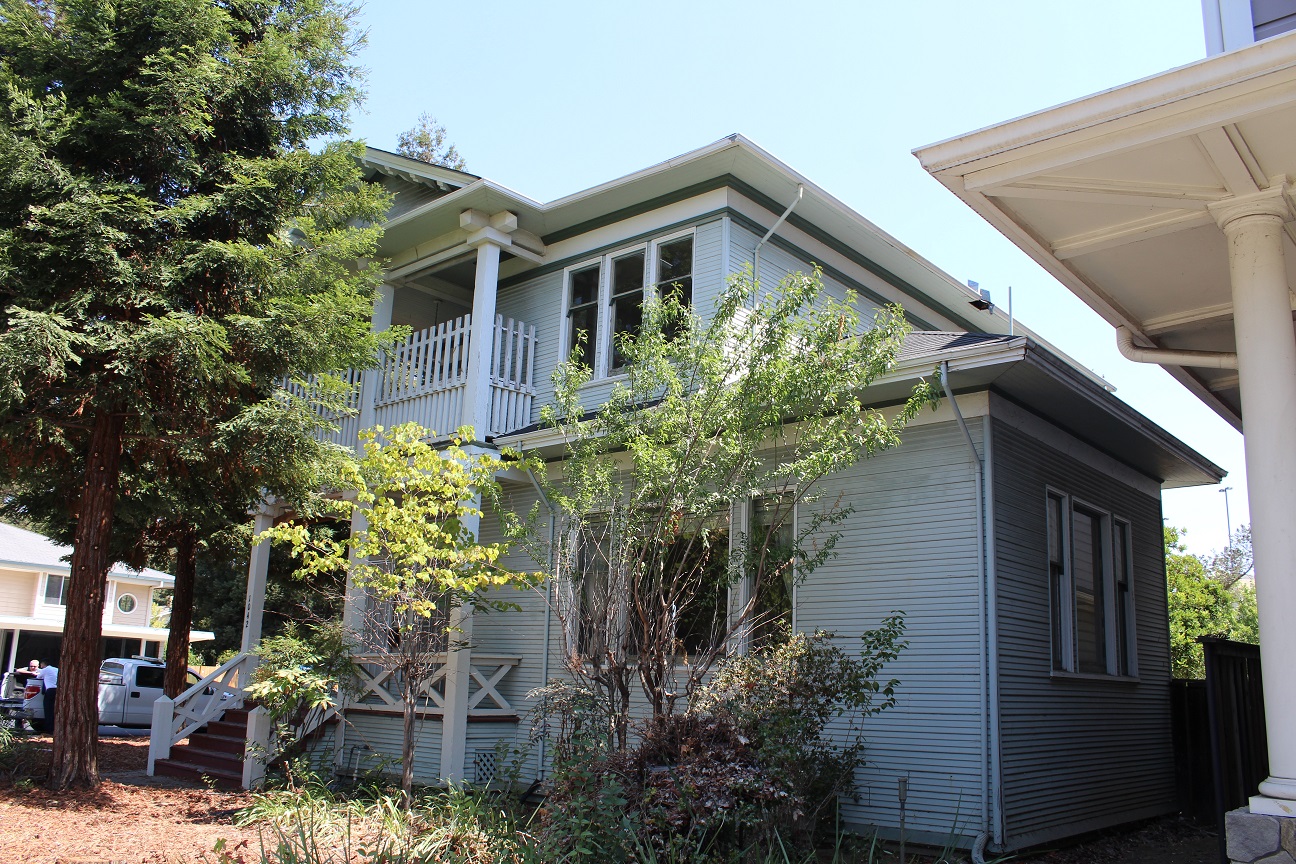 Trower, Charles, House, located in Napa, was the residence of Napa mayor Charles Trower during his term in office. Trower was principally involved with improvements to Napa's water system and the city waterfront during his term of office. The residence, a two-story foursquare with elements of Queen Anne and Craftsman architecture, is significant as the only remaining building surviving from Trower's term in office, as Napa's city hall from his term of office, and his principal workplace, no longer stand.
Trower, Charles, House, located in Napa, was the residence of Napa mayor Charles Trower during his term in office. Trower was principally involved with improvements to Napa's water system and the city waterfront during his term of office. The residence, a two-story foursquare with elements of Queen Anne and Craftsman architecture, is significant as the only remaining building surviving from Trower's term in office, as Napa's city hall from his term of office, and his principal workplace, no longer stand.
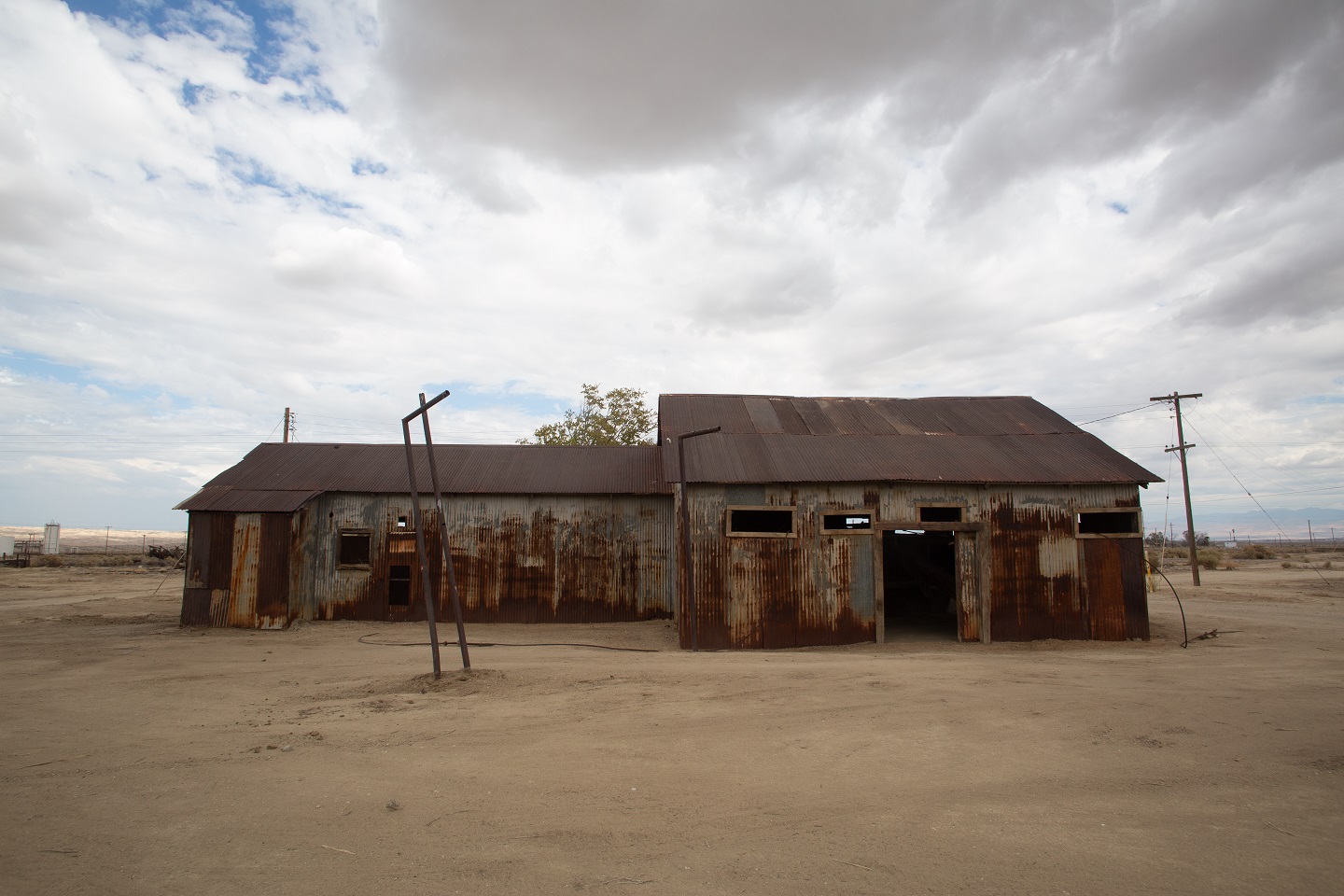 Midway Sunset Jack Plant Constructed in approximately 1913, the Midway-Sunset Jack Plant is an extremely rare example of central power and “jack-line” oil pumping technology, on its original site and housed in its original building. The Midway-Sunset Jack Plant is also significant for its association with the early twentieth century development and production of California’s largest oilfield, the Midway-Sunset Oil Field in western Kern County.
Midway Sunset Jack Plant Constructed in approximately 1913, the Midway-Sunset Jack Plant is an extremely rare example of central power and “jack-line” oil pumping technology, on its original site and housed in its original building. The Midway-Sunset Jack Plant is also significant for its association with the early twentieth century development and production of California’s largest oilfield, the Midway-Sunset Oil Field in western Kern County.
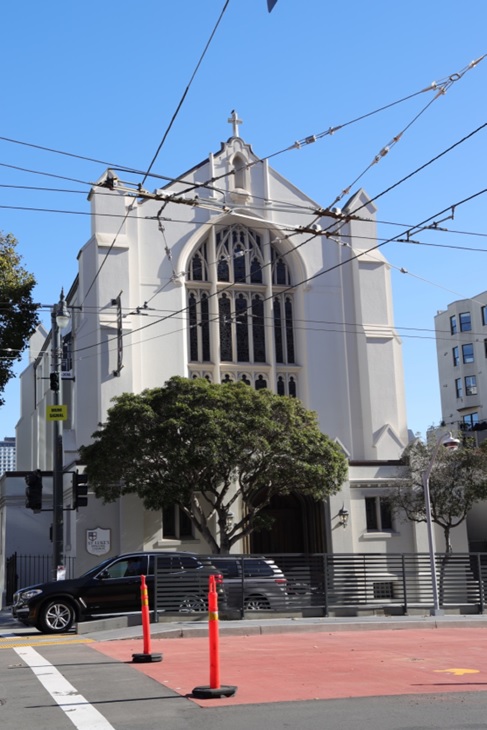 St. Luke's Episcopal Church Constructed in 1910, St. Luke’s Episcopal Church occupies the northeast corner parcel of the intersection of Van Ness Avenue and Clay Streets in San Francisco and is as an excellent example of an early twentieth century, steel-frame, Late Gothic Revival church designed by master California architect Benjamin Geer McDougall.
St. Luke's Episcopal Church Constructed in 1910, St. Luke’s Episcopal Church occupies the northeast corner parcel of the intersection of Van Ness Avenue and Clay Streets in San Francisco and is as an excellent example of an early twentieth century, steel-frame, Late Gothic Revival church designed by master California architect Benjamin Geer McDougall.
Properties nominated as California Historical Landmarks
California Historical Landmarks Associated with the Ohlone-Portolá Heritage Trail is a series of amendments to five existing California Historical Landmarks, all associated with the October-November 1769 expedition of Spanish explorer Gaspar de Portolá through Ohlone territory, all located in what is now San Mateo County, and the expedition's interactions with the Ohlone people. This common historic context provides updated documentation and geographical information regarding the expedition, and the critical role played by the Ohlone in the success of Portolá's journey.

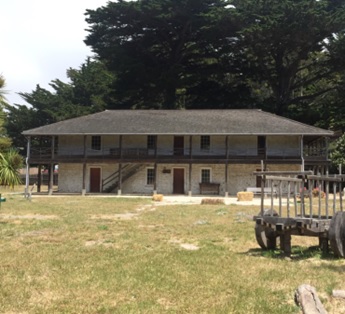 Ohlone-Portolá Heritage Trail, San Pedro (CHL 24 Amendment) marks the Portolá expedition's campsite of October 31-November 1 in the San Pedro Valley.
Ohlone-Portolá Heritage Trail, San Pedro (CHL 24 Amendment) marks the Portolá expedition's campsite of October 31-November 1 in the San Pedro Valley.

 Ohlone-Portolá Heritage Trail, San Andreas Valley (CHL 27 Amendment) marks where the Portolá expedition met the Ssalson people, who provided the expedition with food and hospitality.
Ohlone-Portolá Heritage Trail, San Andreas Valley (CHL 27 Amendment) marks where the Portolá expedition met the Ssalson people, who provided the expedition with food and hospitality.
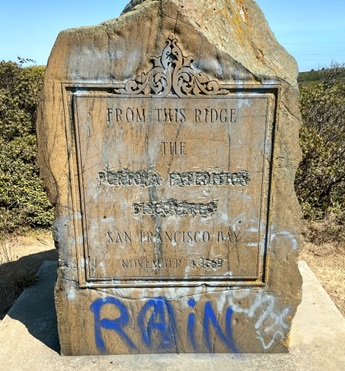 Ohlone-Portolá Heritage Trail, Sighting of San Francisco Bay (CHL 394 Amendment), previously identified as the site of "discovery" of San Francisco Bay, is the point where members of the Portolá expedition first viewed the southern edge of the bay.
Ohlone-Portolá Heritage Trail, Sighting of San Francisco Bay (CHL 394 Amendment), previously identified as the site of "discovery" of San Francisco Bay, is the point where members of the Portolá expedition first viewed the southern edge of the bay.
Properties nominated as California Points of Historical Interest
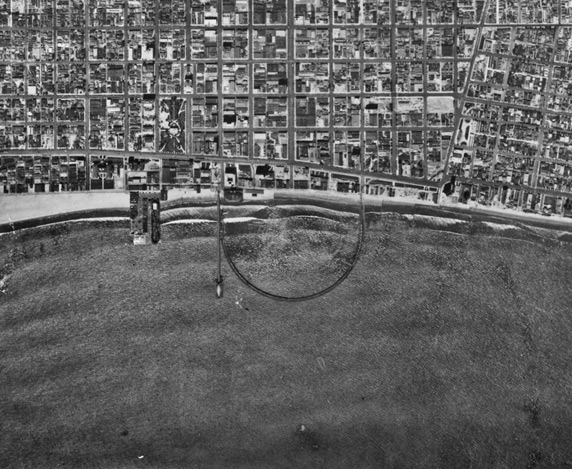 Site of the 1938 National Surfing and Paddleboard Championships is approximately 28.5 acres, the location of Los Angeles County’s first surfing and paddleboard competition billed as a national event. The event was both a successful visitor attraction for the City of Long Beach and a notable contest for Southern California surfers and paddleboarders during the pre-war period. The site represents a former surf break and proximate beach area, located between the former Municipal/Rainbow Piers and The Pike amusement zone. Beach reclamation and redevelopment projects, first initiated in the 1940s and extending into the 2000s, have noticeably altered the Long Beach waterfront. The nearshore surf break, where the surfing competition was held and that intersected the paddleboard course, was eliminated during Long Beach’s extensive coastal redevelopment.
Site of the 1938 National Surfing and Paddleboard Championships is approximately 28.5 acres, the location of Los Angeles County’s first surfing and paddleboard competition billed as a national event. The event was both a successful visitor attraction for the City of Long Beach and a notable contest for Southern California surfers and paddleboarders during the pre-war period. The site represents a former surf break and proximate beach area, located between the former Municipal/Rainbow Piers and The Pike amusement zone. Beach reclamation and redevelopment projects, first initiated in the 1940s and extending into the 2000s, have noticeably altered the Long Beach waterfront. The nearshore surf break, where the surfing competition was held and that intersected the paddleboard course, was eliminated during Long Beach’s extensive coastal redevelopment.
August 4, 2023 SHRC Meeting
The following properties were heard at the August 4, 2023 SHRC meeting, held in Sacramento, Sacramento County.
Properties nominated to the National Register of Historic Places
Native Americans and the California Mission System 1769-1848 Multiple Property Documentation Form provides three historic contexts to incorporate Native American history and voices into evaluations of mission system related properties. Fifteen of the twenty-one California missions are listed on the National Register of Historic Places, with nine also listed as National Historic Landmarks. Other properties related to the mission system listed on the National Register are associated with all four presidios, two mission outstations, and twenty-two Mission Period adobes and ranchos. Most of these designations were from the 1960s and 1970s, with sparse documentation that does not adequately represent Native American experiences within and outside the mission spheres of influence.
 Mission La Purísima at ’Amuwu District is the first nomination updated in association with the Native Americans and the California Mission System 1769-1848 Multiple Property Submission. As the pivotal location of the largest Native American rebellion against the Spanish on North America’s West Coast, the property is associated with the historic context “Native Identity, Persistence, and Resistance.” Established at a location known to the Chumash as ’Amuwu, the district includes the casco (headquarters) and the primary aqueduct system of the second site of Mission La Purísima, in operation from 1813 until 1835. Mission La Purísima was designated a National Historic Landmark in 1978, with resulting listing on the National Register of Historic Places at the national level of significance for its detailed and accurate reconstruction of a complete California mission. For its additional context under additional criteria in new areas of significance, this nomination documents state level of significance distinct from the national level of significance associated with the reconstruction.
Mission La Purísima at ’Amuwu District is the first nomination updated in association with the Native Americans and the California Mission System 1769-1848 Multiple Property Submission. As the pivotal location of the largest Native American rebellion against the Spanish on North America’s West Coast, the property is associated with the historic context “Native Identity, Persistence, and Resistance.” Established at a location known to the Chumash as ’Amuwu, the district includes the casco (headquarters) and the primary aqueduct system of the second site of Mission La Purísima, in operation from 1813 until 1835. Mission La Purísima was designated a National Historic Landmark in 1978, with resulting listing on the National Register of Historic Places at the national level of significance for its detailed and accurate reconstruction of a complete California mission. For its additional context under additional criteria in new areas of significance, this nomination documents state level of significance distinct from the national level of significance associated with the reconstruction.
Higgins Building, a ten-story steel-reinforced concrete building in the Beaux Arts style, stands prominently at the corner of Second and Main Streets in downtown Los Angeles. The Higgins advanced the skyline of Los Angeles by demonstrating the successful use of concrete in a hi-rise, and advanced its infrastructure by embracing modern utilities, including a private electrical generating plant in its sub-basement. From its opening in 1910, the building was integral to the social history and commercial development of downtown Los Angeles at the beginning of the twentieth century and in the forefront of efforts at the beginning of the twenty-first century to repurpose the city’s abandoned or underused historic buildings.
 Immanuel Evangelical Lutheran Church of Alameda is an increasingly rare example of Carpenter Gothic design and has a picturesque, asymmetrical composition. The complete set of stained-glass windows is original to the church’s 1890-1891 construction. The church embodies the distinctive characteristics of the Carpenter Gothic style, possesses high artistic values and craftsmanship, and represents the work of master architect Julius E. Krafft. The redwood church was constructed by builders Herbst and McLeod of Oakland, with stained glass windows attributed to John Mallon, an early and recognized stained glass maker in San Francisco.
Immanuel Evangelical Lutheran Church of Alameda is an increasingly rare example of Carpenter Gothic design and has a picturesque, asymmetrical composition. The complete set of stained-glass windows is original to the church’s 1890-1891 construction. The church embodies the distinctive characteristics of the Carpenter Gothic style, possesses high artistic values and craftsmanship, and represents the work of master architect Julius E. Krafft. The redwood church was constructed by builders Herbst and McLeod of Oakland, with stained glass windows attributed to John Mallon, an early and recognized stained glass maker in San Francisco.
 Alpha Omega Chapter of Sigma Chi Fraternity House was designed by architect John Kennedy Branner in the Colonial Revival style and constructed in 1938 on the Stanford University campus. The three-story side-gabled fraternity house is significant for its association with the implementation of the Civil Rights Act of 1964 that banned racial discrimination in public accommodations. In 1965, the Chapter extended membership to Kenny Washington, a Black freshman student, thus rejecting Alpha Omega’s longstanding mandate of racial exclusion by the national fraternity of Sigma Chi. The action by the fraternity’s national executive committee to suspend the Stanford University Sigma Chi chapter started a national debate on university campuses and in the federal government on the legality of racial exclusion in public accommodations that led to eliminating racial preferences in university associations and fraternity admissions.
Alpha Omega Chapter of Sigma Chi Fraternity House was designed by architect John Kennedy Branner in the Colonial Revival style and constructed in 1938 on the Stanford University campus. The three-story side-gabled fraternity house is significant for its association with the implementation of the Civil Rights Act of 1964 that banned racial discrimination in public accommodations. In 1965, the Chapter extended membership to Kenny Washington, a Black freshman student, thus rejecting Alpha Omega’s longstanding mandate of racial exclusion by the national fraternity of Sigma Chi. The action by the fraternity’s national executive committee to suspend the Stanford University Sigma Chi chapter started a national debate on university campuses and in the federal government on the legality of racial exclusion in public accommodations that led to eliminating racial preferences in university associations and fraternity admissions.
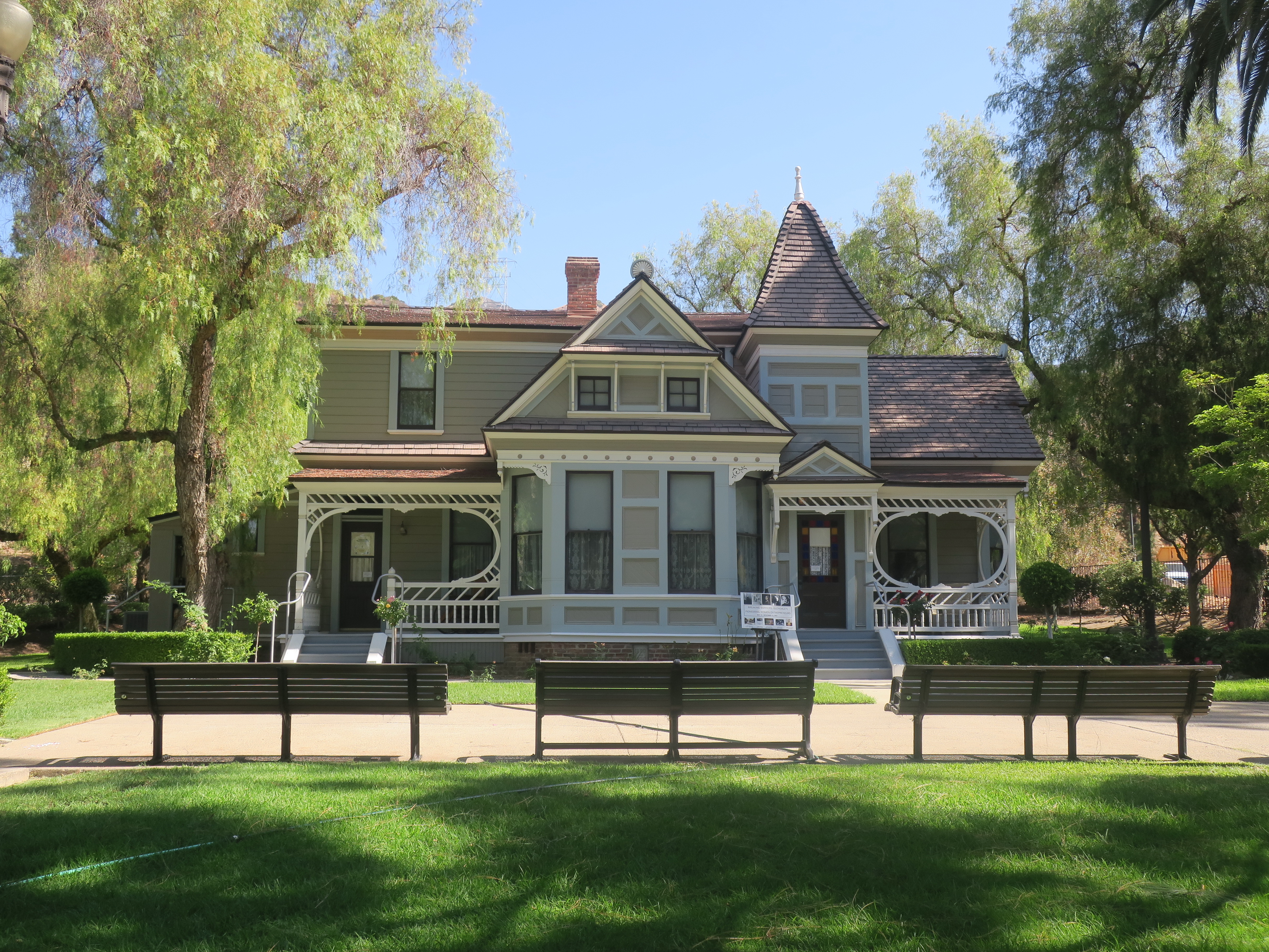 Doctors House is a two-story, circa 1888 Queen Anne style building in Glendale. Originally a single dwelling, it was moved to a public park to avert demolition and repurposed as a museum. Typical of Queen Anne style buildings, the property also incorporates some elements of the closely related Eastlake style, namely its squared roof tower and some of the exterior wood details—features that illustrate the aesthetic values underpinning the Queen Anne style. The building is one of only two extant Queen Anne style buildings in Glendale and is therefore a rare surviving example of the community’s early architectural heritage.
Doctors House is a two-story, circa 1888 Queen Anne style building in Glendale. Originally a single dwelling, it was moved to a public park to avert demolition and repurposed as a museum. Typical of Queen Anne style buildings, the property also incorporates some elements of the closely related Eastlake style, namely its squared roof tower and some of the exterior wood details—features that illustrate the aesthetic values underpinning the Queen Anne style. The building is one of only two extant Queen Anne style buildings in Glendale and is therefore a rare surviving example of the community’s early architectural heritage.
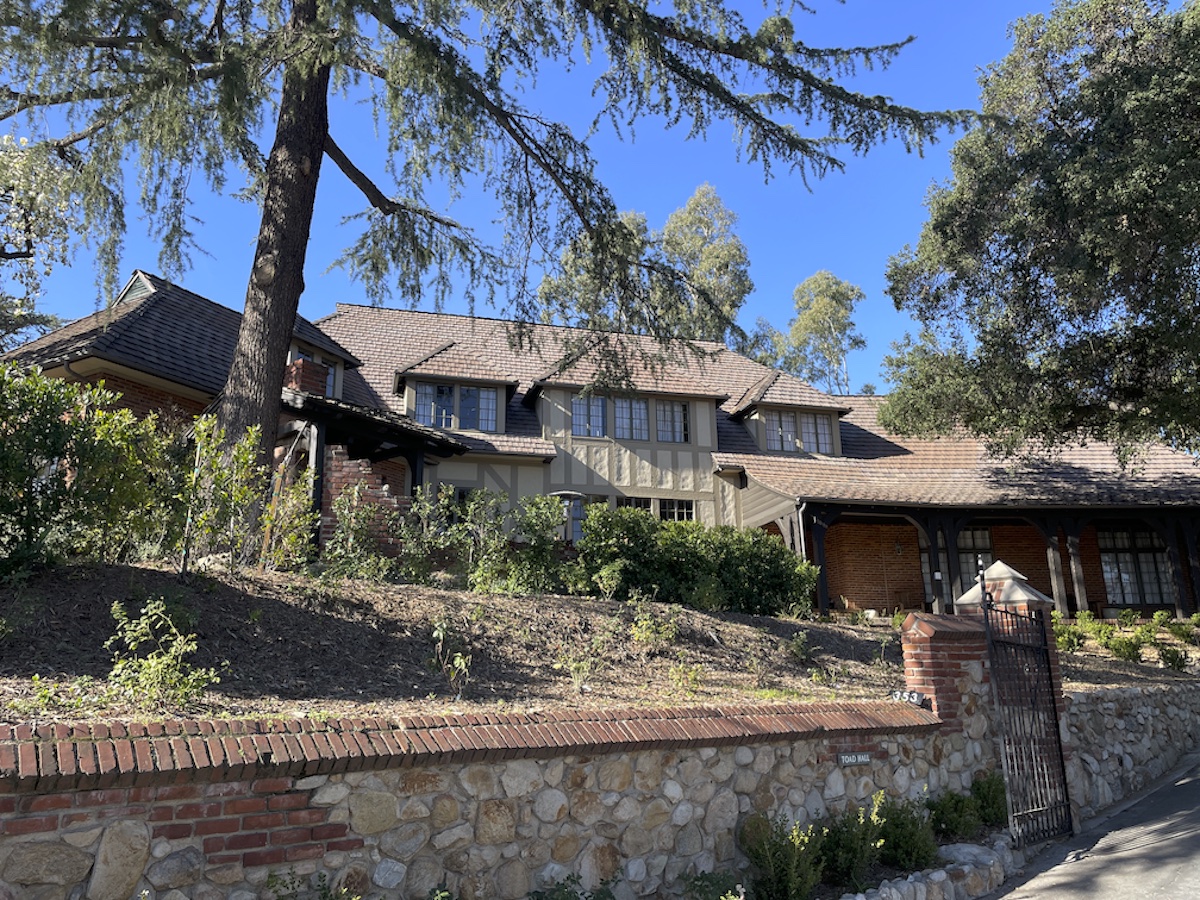 Toad Hall, named after the house in the children’s novel The Wind in the Willows by Kenneth Grahame, embodies the distinctive characteristics of the Tudor Revival style. Completed in 1926, the house was built by the William R. Myers Company, a real estate development company that began in Los Angeles in 1907 and was the earliest developer of the Cheviotdale Heights neighborhood in Pasadena. The single-family residence was designed by Donald R. Wilkinson, an architect with a prolific career in the region.
Toad Hall, named after the house in the children’s novel The Wind in the Willows by Kenneth Grahame, embodies the distinctive characteristics of the Tudor Revival style. Completed in 1926, the house was built by the William R. Myers Company, a real estate development company that began in Los Angeles in 1907 and was the earliest developer of the Cheviotdale Heights neighborhood in Pasadena. The single-family residence was designed by Donald R. Wilkinson, an architect with a prolific career in the region.
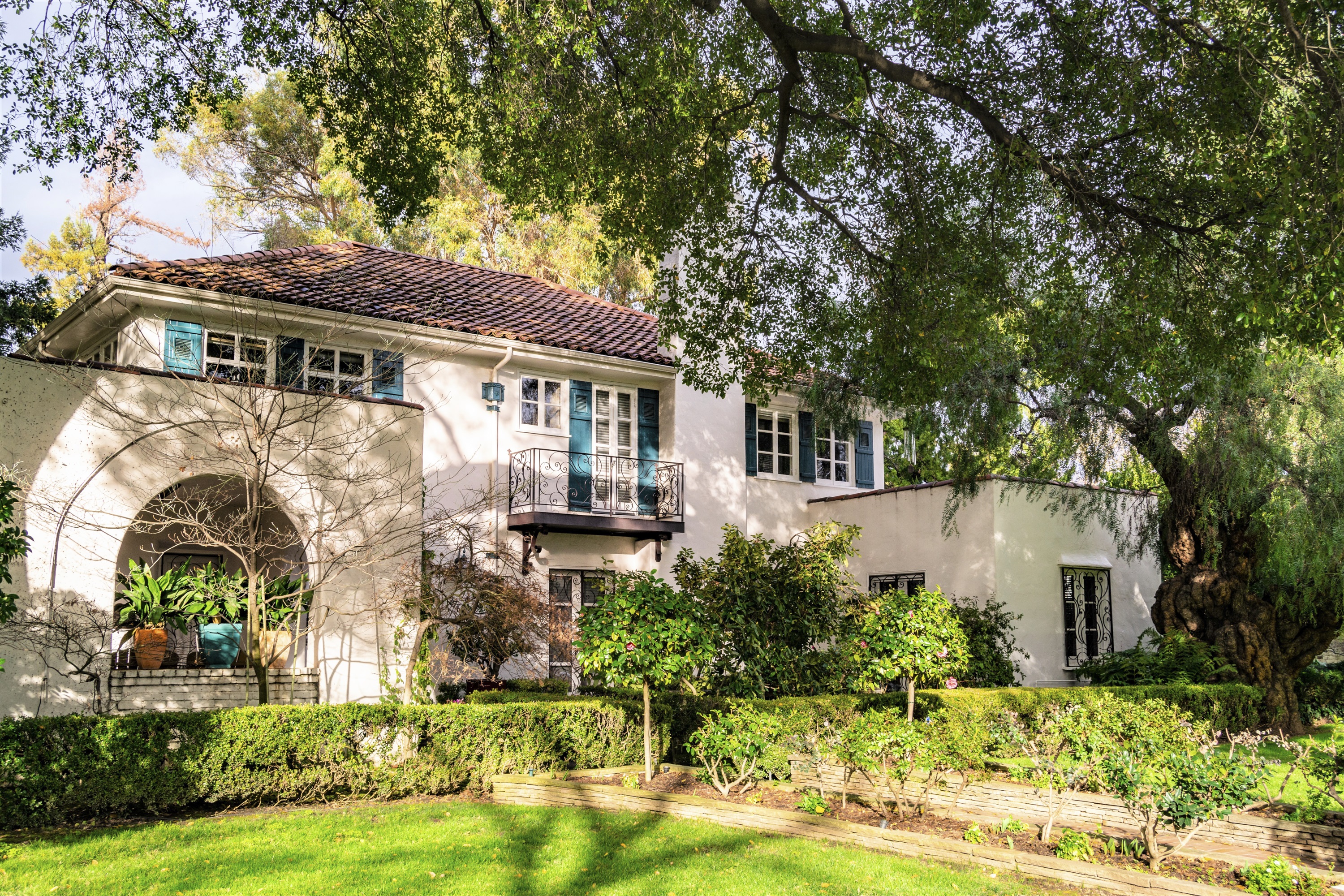 Montgomery Way Gateway Historic District, in the South Curtis Park area of Sacramento, is comprised of a significant concentration and continuity of houses designed in early twentieth century period revival styles including Spanish Colonial Revival, Italian Renaissance, Tudor Revival, Mediterranean Revival, Colonial Revival, Classical Revival, Monterey Style, Italian Renaissance, and French Renaissance. Significant for its architecture and association with the growth of suburban neighborhoods, the development of the tract coincided with the national Better Homes Movement, which received broad support from both government and industry.
Montgomery Way Gateway Historic District, in the South Curtis Park area of Sacramento, is comprised of a significant concentration and continuity of houses designed in early twentieth century period revival styles including Spanish Colonial Revival, Italian Renaissance, Tudor Revival, Mediterranean Revival, Colonial Revival, Classical Revival, Monterey Style, Italian Renaissance, and French Renaissance. Significant for its architecture and association with the growth of suburban neighborhoods, the development of the tract coincided with the national Better Homes Movement, which received broad support from both government and industry.
 La Jolla Park Coastal Historic District, located fourteen miles north of the City of San Diego, includes coastal parkland, public rights-of-way, and resources on public and private property, encompassing approximately eight acres. The boundary of the district is defined by the coastal parkway and trail, extending south from the intersection of Coast Walk and Torrey Pines Road to the end of Coast Boulevard, and seaward to the mean high tideline. The contiguous coastal parkway shaped the development of the picturesque suburb of La Jolla; led to the construction of small cottages, bungalows, and hotels; and was the center of entertainment and leisure activities.
La Jolla Park Coastal Historic District, located fourteen miles north of the City of San Diego, includes coastal parkland, public rights-of-way, and resources on public and private property, encompassing approximately eight acres. The boundary of the district is defined by the coastal parkway and trail, extending south from the intersection of Coast Walk and Torrey Pines Road to the end of Coast Boulevard, and seaward to the mean high tideline. The contiguous coastal parkway shaped the development of the picturesque suburb of La Jolla; led to the construction of small cottages, bungalows, and hotels; and was the center of entertainment and leisure activities.
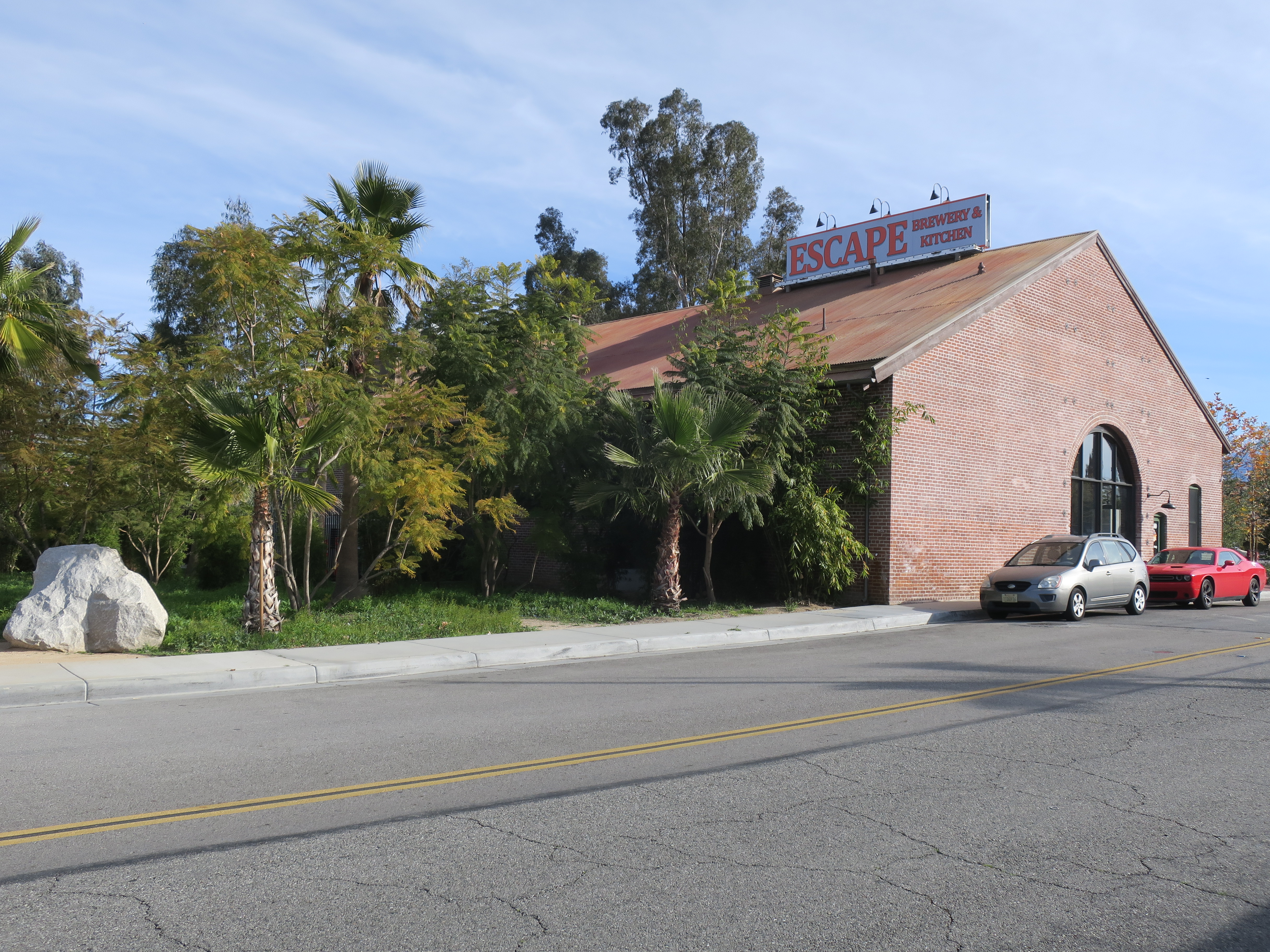
Evergreen Cemetery is a 21.76 acre burial ground located in Riverside, at the foot of Mount Rubidoux. Developed over the course of 150 years, from 1872 to 1960, the cemetery includes parklike settings, mature trees, curvilinear drives and footpaths, and a wide range of flat and upright monuments. The cemetery also includes a mausoleum, chapel with crematory, cemetery office, maintenance building, and receiving vaults, also historically used as an icehouse.
 Sierra Railway Locomotive No. 3 is a standard gauge 4-6-0 "Ten-Wheeler" wagon-top boiler steam locomotive, built by Rogers Locomotive & Machine Works, Patterson, New Jersey, in 1891. Originally fired by coal, it was converted to oil-fired operation, and received several repairs durng its time as a locomotive for the Sierra Railroad in Tuolumne County, California, as part of regular maintenance and two wrecks. Starting in the 1920s, Sierra No. 3 became the railroad's principal locomotive used in motion pictures, and later television programs, shot on the Sierra Railroad. To facilitate its use in movies set in different eras and geographic locations, several parts of the locomotive can be switched out or disguised, including smokestack, pilot, headlight and other features. Sierra No. 3 represents the most famous "movie star" locomotive, as used on Hollywood's greatest movie railroad.
Sierra Railway Locomotive No. 3 is a standard gauge 4-6-0 "Ten-Wheeler" wagon-top boiler steam locomotive, built by Rogers Locomotive & Machine Works, Patterson, New Jersey, in 1891. Originally fired by coal, it was converted to oil-fired operation, and received several repairs durng its time as a locomotive for the Sierra Railroad in Tuolumne County, California, as part of regular maintenance and two wrecks. Starting in the 1920s, Sierra No. 3 became the railroad's principal locomotive used in motion pictures, and later television programs, shot on the Sierra Railroad. To facilitate its use in movies set in different eras and geographic locations, several parts of the locomotive can be switched out or disguised, including smokestack, pilot, headlight and other features. Sierra No. 3 represents the most famous "movie star" locomotive, as used on Hollywood's greatest movie railroad.
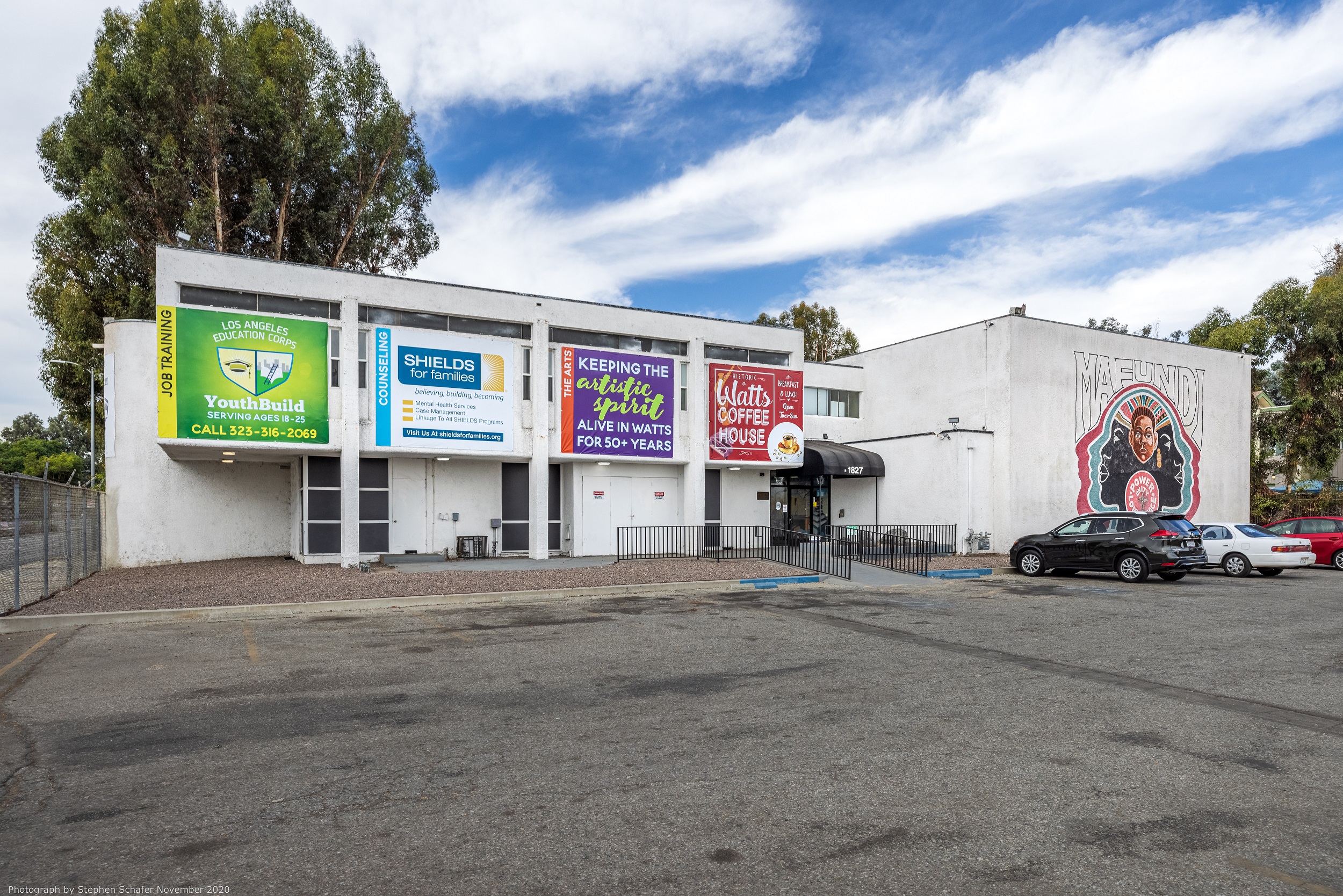 Watts Happening Cultural Center is a Late Modern community center, built in 1970 and located in the Watts neighborhood of Los Angeles. Following the Watts Uprising of 1965, young people in Watts opened the Watts Happening Coffee House in an old furniture store, becoming an incubator for artistic expression and ad hoc community center, becoming home to the Mafundi Institute, a Black cultural academy. When the old building was not permitted to contain more than 50 people due to its unreinforced masonry construction, organizers received a grant to build a new facility, designed by Black architects Robert Kennard and Arthur Silvers. The Mafundi Institute closed its doors in 1975, but the building was reopened in 1982 and still serves its function as a community art space.
Watts Happening Cultural Center is a Late Modern community center, built in 1970 and located in the Watts neighborhood of Los Angeles. Following the Watts Uprising of 1965, young people in Watts opened the Watts Happening Coffee House in an old furniture store, becoming an incubator for artistic expression and ad hoc community center, becoming home to the Mafundi Institute, a Black cultural academy. When the old building was not permitted to contain more than 50 people due to its unreinforced masonry construction, organizers received a grant to build a new facility, designed by Black architects Robert Kennard and Arthur Silvers. The Mafundi Institute closed its doors in 1975, but the building was reopened in 1982 and still serves its function as a community art space.
Properties nominated as Points of Historical Interest
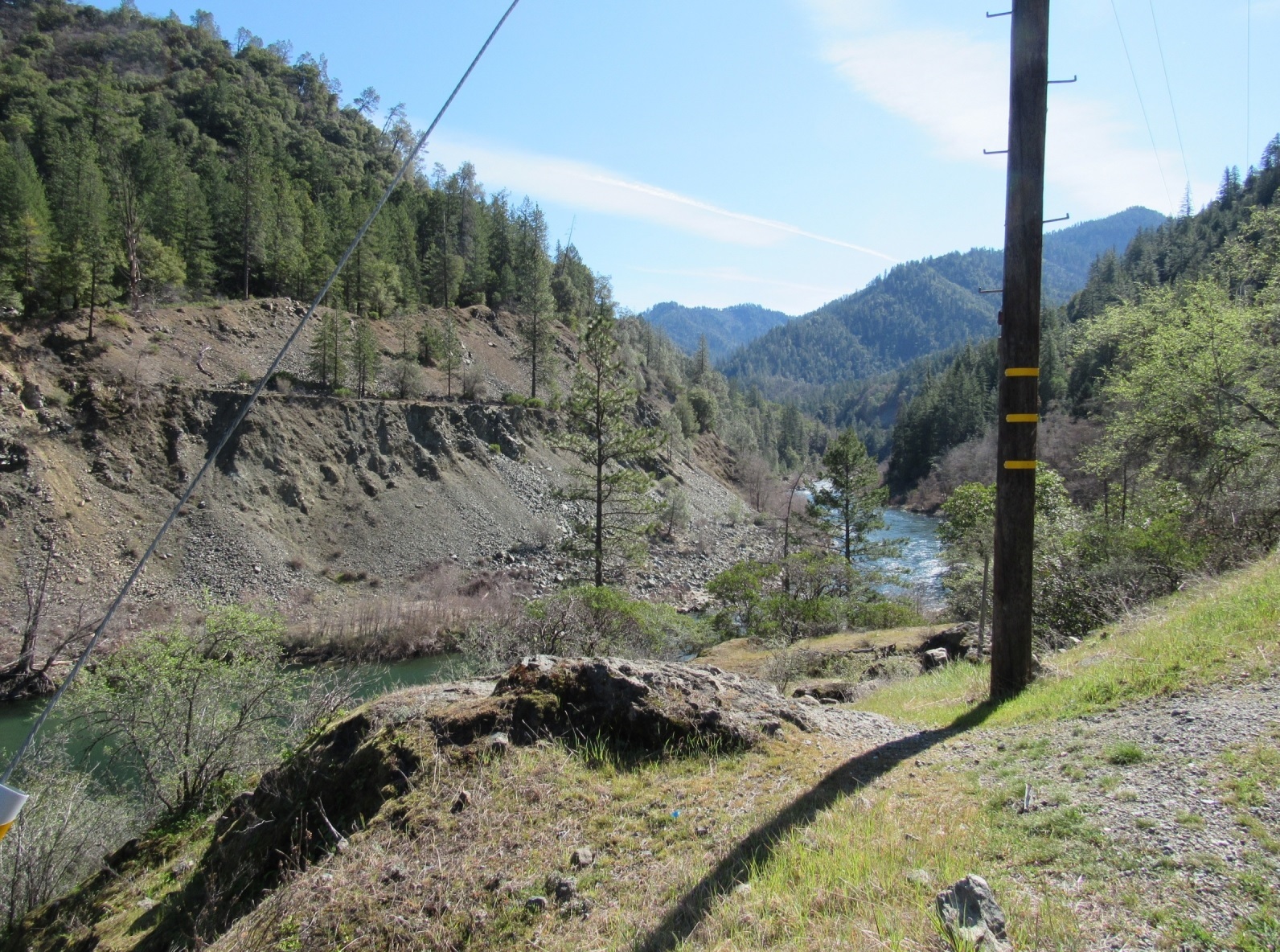 Site of China Slide, located near Weaverville in Trinity County, marks the site of a February 3, 1890 landslide upstream from Collins Bar and Dixon Bar Creeks, along the Trinity River, that resulted in the death of two Chinese miners. The resulting blockage of the river created a nine-mile temporary dam that inundated the area upstream and resulted in dramatic changes to the Trinity River, which took years to return to its pre-slide state, and scars on the hillside from the slide are still visible today.
Site of China Slide, located near Weaverville in Trinity County, marks the site of a February 3, 1890 landslide upstream from Collins Bar and Dixon Bar Creeks, along the Trinity River, that resulted in the death of two Chinese miners. The resulting blockage of the river created a nine-mile temporary dam that inundated the area upstream and resulted in dramatic changes to the Trinity River, which took years to return to its pre-slide state, and scars on the hillside from the slide are still visible today.
November 3, 2023 SHRC Meeting
The following properties were reviewed at the January 20, 2023 SHRC Meeting, held virtually via Zoom and CAL-SPAN.
Properties nominated to the National Register of Historic Places
 Belden-Birkhofer House, in Guerneville, Sonoma County, was constructed between 1919 and 1922 and designed by the architecture firm Miller & Warnecke of Oakland, California. The building was constructed in the Mission Revival style for Ralph A. and M. Gretchen (Ungewitter) Belden. The house was later sold to Oscar and Laura Birkhofer who lived there for almost 40 years.
Belden-Birkhofer House, in Guerneville, Sonoma County, was constructed between 1919 and 1922 and designed by the architecture firm Miller & Warnecke of Oakland, California. The building was constructed in the Mission Revival style for Ralph A. and M. Gretchen (Ungewitter) Belden. The house was later sold to Oscar and Laura Birkhofer who lived there for almost 40 years.
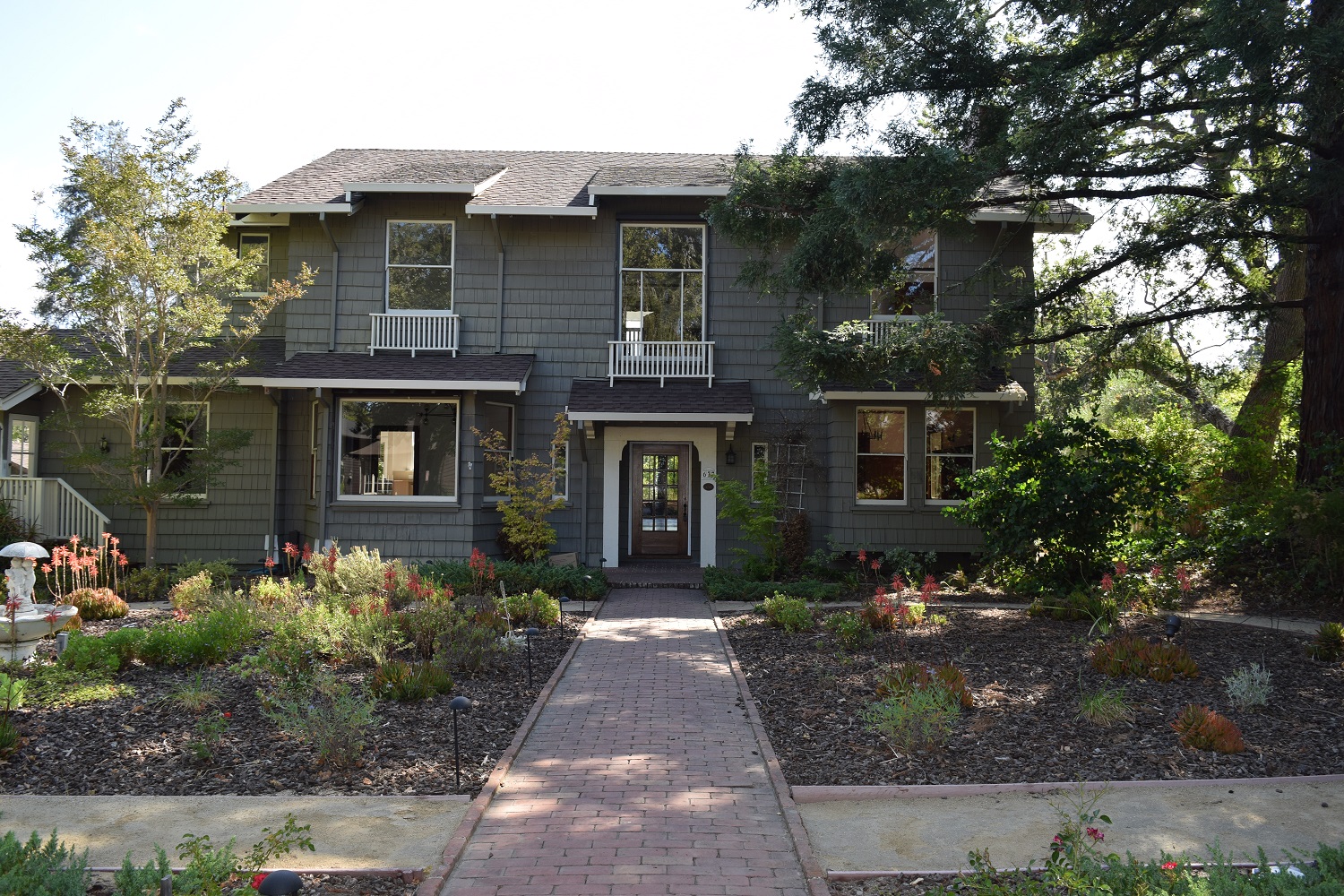 Allen, Clifford, House, is located on the Stanford University campus, in Santa Clara County. The house was constructed in 1914 and built in the First Bay Tradition style, with Craftsman elements, and designed by a locally prominent master architect, John K. Branner. The period of significance spans from 1914-1939, beginning with the construction of the original design by Branner, and ending with the construction of additions designed by another prominent local architect, Birge Clark
Allen, Clifford, House, is located on the Stanford University campus, in Santa Clara County. The house was constructed in 1914 and built in the First Bay Tradition style, with Craftsman elements, and designed by a locally prominent master architect, John K. Branner. The period of significance spans from 1914-1939, beginning with the construction of the original design by Branner, and ending with the construction of additions designed by another prominent local architect, Birge Clark
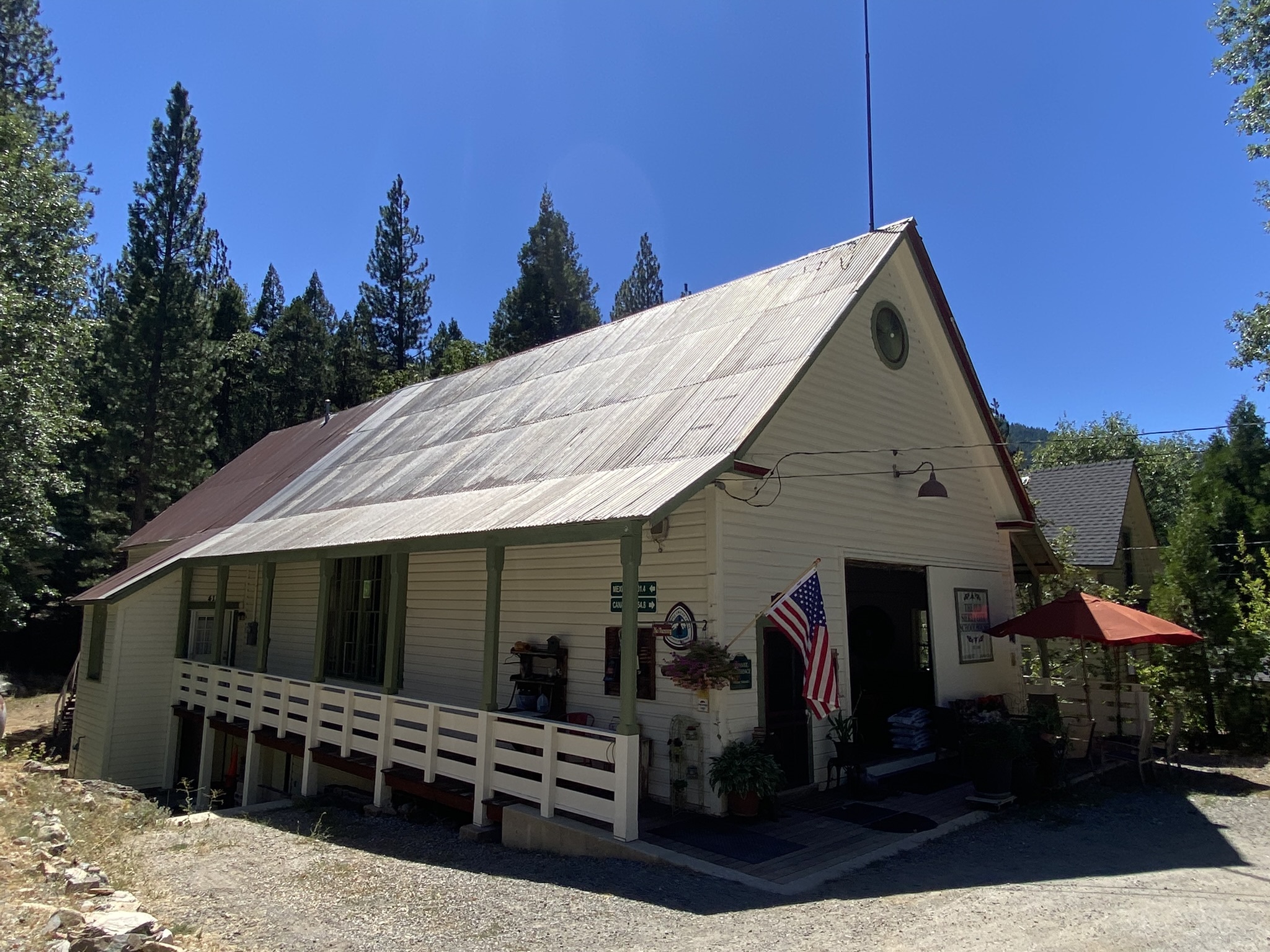 Sierra City School is a vernacular wooden schoolhouse located in Sierra City, an unincorporated community of Sierra County, adjacent to Highway 49. Built in 1889, it was the principal education facility of this mountain community until it closed in 1954. In addition to being the center of education, the school also served as a local community center.
Sierra City School is a vernacular wooden schoolhouse located in Sierra City, an unincorporated community of Sierra County, adjacent to Highway 49. Built in 1889, it was the principal education facility of this mountain community until it closed in 1954. In addition to being the center of education, the school also served as a local community center.
 Western Manufacturing Company is a 1923 building located in the South of Market neighborhood of San Francisco, significant for its architecture as a high style industrial building, featuring polychrome brickwork and other architectural details that stands out compared to its neighbors. The property was designed by builder Sam Schell.
Western Manufacturing Company is a 1923 building located in the South of Market neighborhood of San Francisco, significant for its architecture as a high style industrial building, featuring polychrome brickwork and other architectural details that stands out compared to its neighbors. The property was designed by builder Sam Schell.
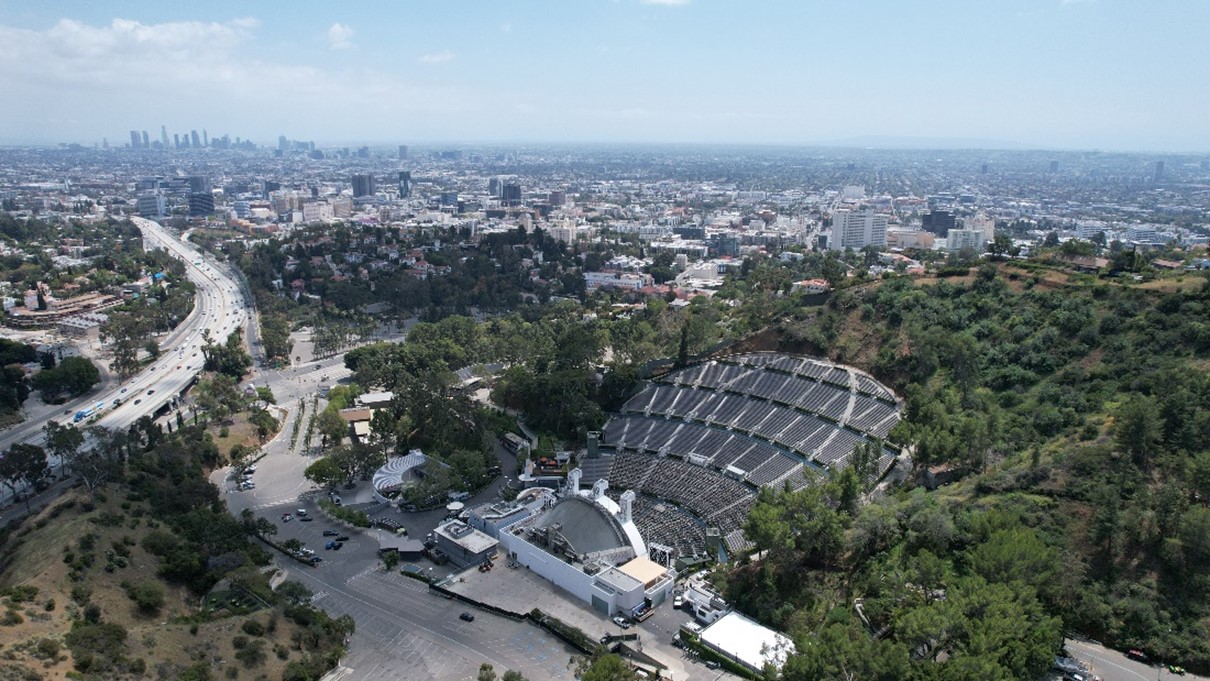 Hollywood Bowl, an open-air amphitheater nestled in the natural south hillside of Bolton Canyon above busy Hollywood Boulevard, in the Hollywood neighborhood of the City of Los Angeles. In a location selected for its natural acoustics, the venue is defined by its natural setting surrounded by chapparal-covered terrain, a cultural landscape dominated by Bolton Canyon and the relationship with the Seating and Stage Area set within the canyon. The Hollywood Bowl built a wide, broad-based audience for arts and culture in Los Angeles during the early to mid-twentieth century and established outdoor performances in a natural setting as a uniquely Southern California experience.
Hollywood Bowl, an open-air amphitheater nestled in the natural south hillside of Bolton Canyon above busy Hollywood Boulevard, in the Hollywood neighborhood of the City of Los Angeles. In a location selected for its natural acoustics, the venue is defined by its natural setting surrounded by chapparal-covered terrain, a cultural landscape dominated by Bolton Canyon and the relationship with the Seating and Stage Area set within the canyon. The Hollywood Bowl built a wide, broad-based audience for arts and culture in Los Angeles during the early to mid-twentieth century and established outdoor performances in a natural setting as a uniquely Southern California experience.
A. Quincy Jones Barn, referred to more simply as the Barn, was constructed in 1949 with alterations in 1965. The L-shaped, wood-frame construction was designed in the manner of a New England barn. From 1949 to 1965, the building served as the studio of photographers Mary Mead Maddick and Tamis Maddick. From 1965 to 1979, the building served as the home and teaching studio of master architect and educator, A. Quincy Jones, FAIA. The rare example of his adaptive reuse of a pre-existing building received national and international recognition.
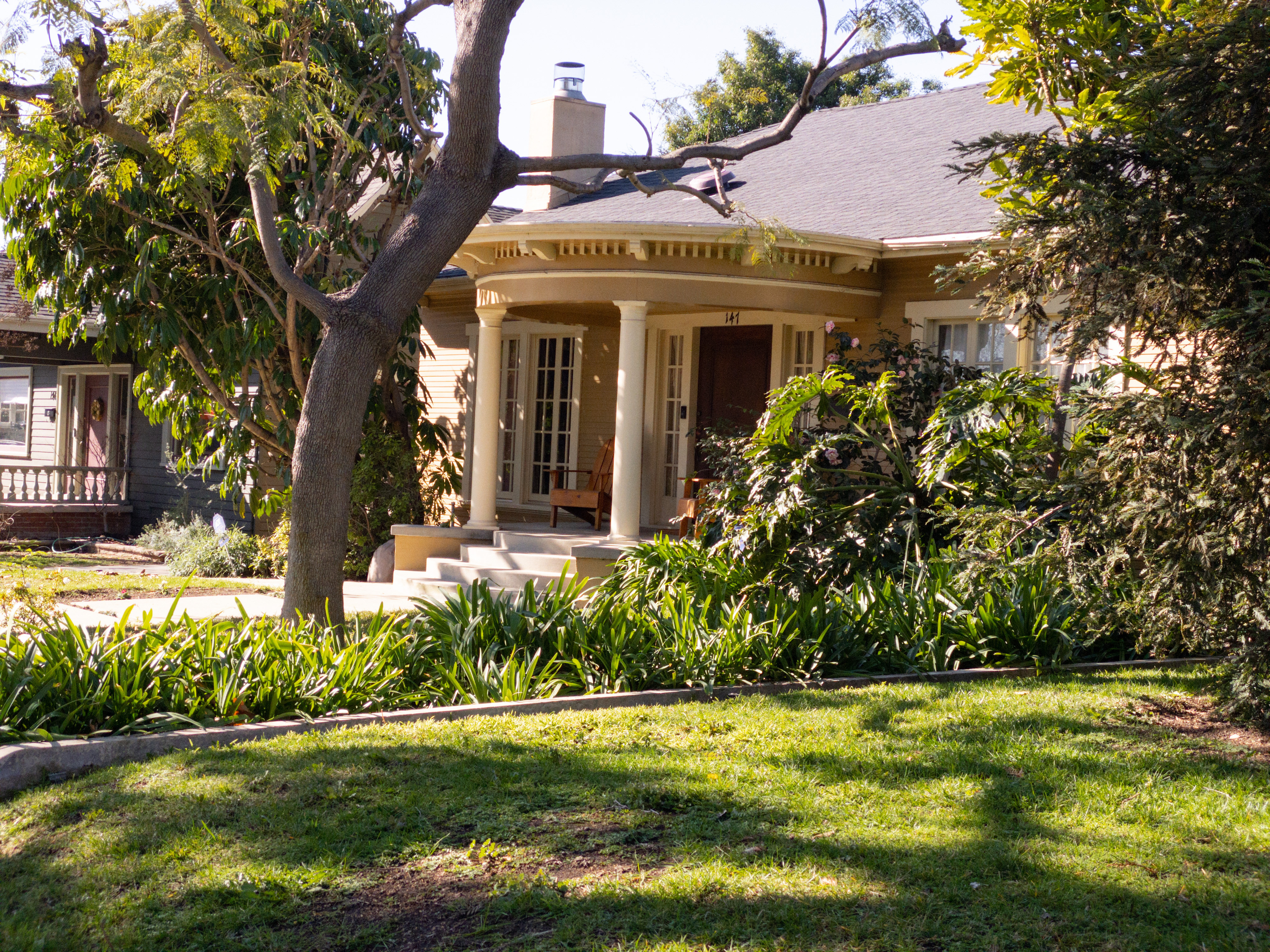 Ridgewood Place Historic District, located near the Windsor Square area of Los Angeles, is a two-block long, single-family residential district, developed as a single tract between 1911 and 1921. Resources were constructed primarily in the Colonial Revival style, with the Tudor Revival, Mediterranean Revival, and Craftsman styles also represented. The district, an excellent example of a Los Angeles streetcar suburb, is located within walking distance from major streetcar corridors of the Los Angeles Railway on Beverly Boulevard and Western Avenue.
Ridgewood Place Historic District, located near the Windsor Square area of Los Angeles, is a two-block long, single-family residential district, developed as a single tract between 1911 and 1921. Resources were constructed primarily in the Colonial Revival style, with the Tudor Revival, Mediterranean Revival, and Craftsman styles also represented. The district, an excellent example of a Los Angeles streetcar suburb, is located within walking distance from major streetcar corridors of the Los Angeles Railway on Beverly Boulevard and Western Avenue.
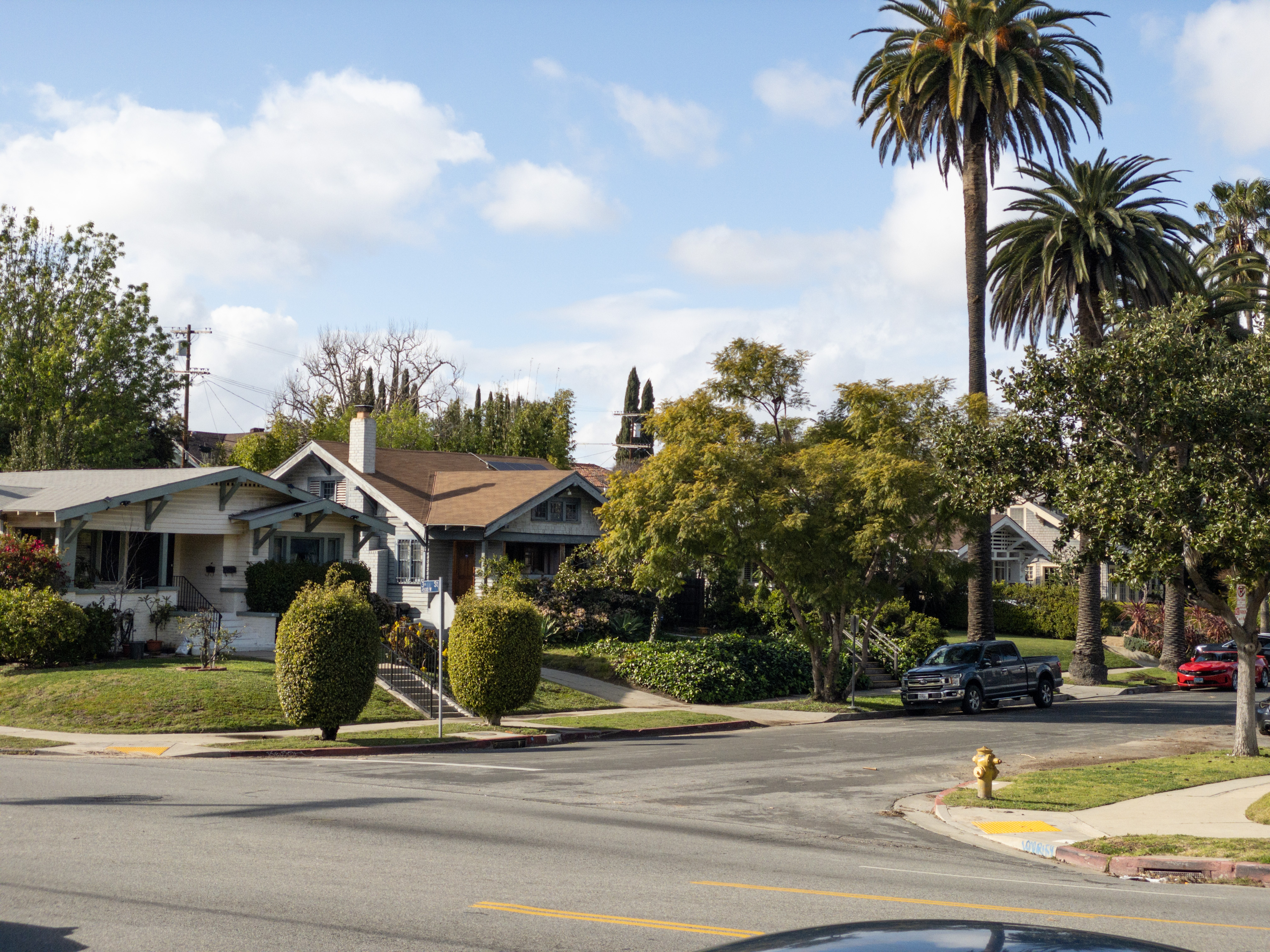 St. Andrews Square Historic District is an irregularly shaped four-block primarily residential district located near the Wilshire Center area of central Los Angeles. Multi-family resources in the district are generally compatible in scale with the single-family resources. The district was developed as multiple tracts in close proximity to Los Angeles Railway streetcar lines. Most buildings are constructed in the Bungalow/Craftsman style, with the Prairie School, Colonial Revival, Mission/Spanish Colonial Revival, Mediterranean Revival, Tudor Revival, and Minimal Traditional styles also represented.
St. Andrews Square Historic District is an irregularly shaped four-block primarily residential district located near the Wilshire Center area of central Los Angeles. Multi-family resources in the district are generally compatible in scale with the single-family resources. The district was developed as multiple tracts in close proximity to Los Angeles Railway streetcar lines. Most buildings are constructed in the Bungalow/Craftsman style, with the Prairie School, Colonial Revival, Mission/Spanish Colonial Revival, Mediterranean Revival, Tudor Revival, and Minimal Traditional styles also represented.
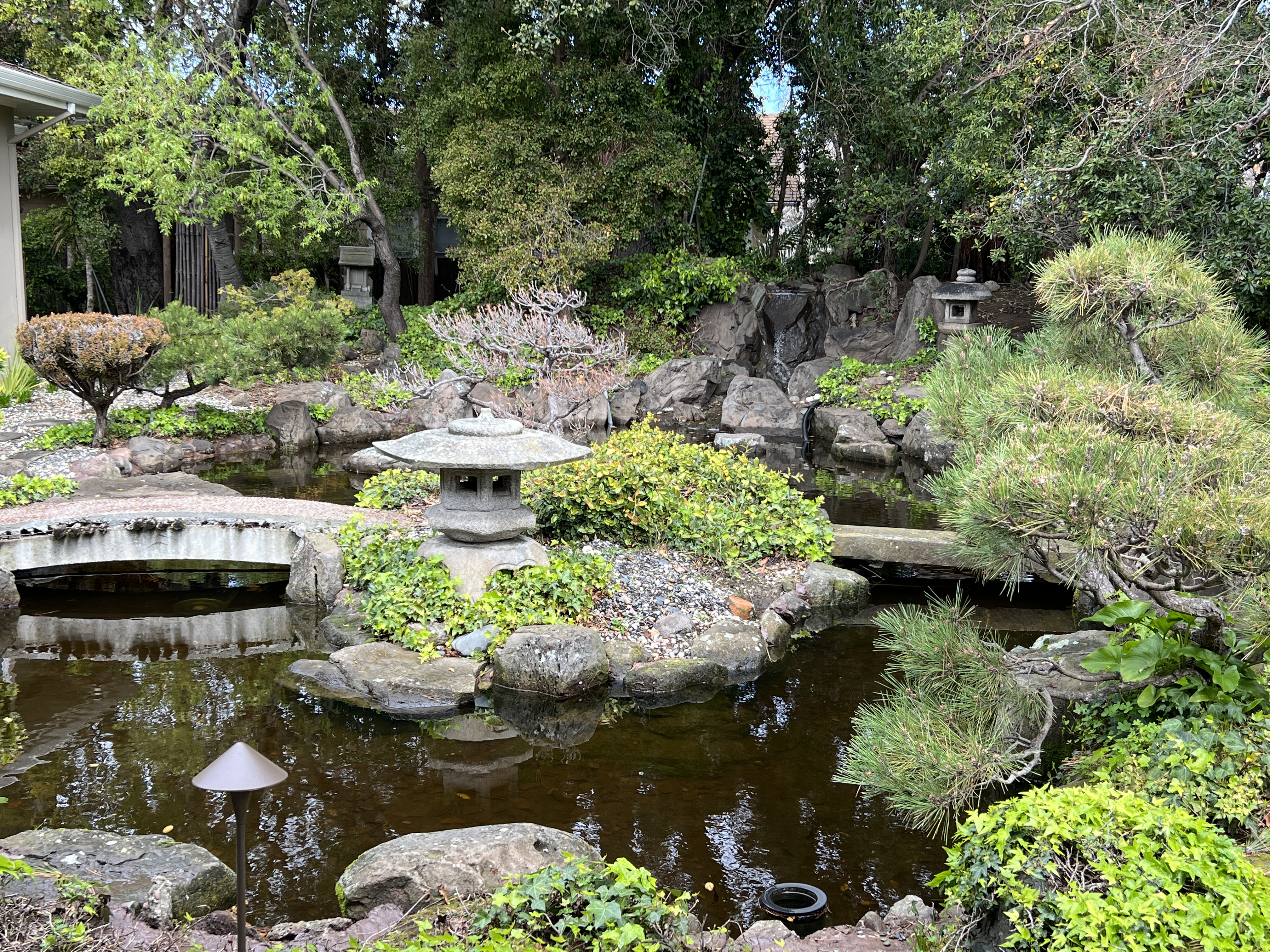
Properties removed from the National Register of Historic Places
 Headquarters Administration Building in Big Basin Redwoods State Park was one of the best examples of an administrative facility constructed between 1933 and 1942 and demonstrated an association with the public works programs that oversaw and administratively controlled the development of facilities within state parks during this period. Due to the 2020 CZU Lightening Complex wildfire, the building was destroyed leaving only the original fireplace, chimney, and stone steps. The fireplace and chimney were later cleared for public safety. The property has ceased to meet the criteria for listing in the National Register because the association and features that made it originally eligible have been lost or destroyed.
Headquarters Administration Building in Big Basin Redwoods State Park was one of the best examples of an administrative facility constructed between 1933 and 1942 and demonstrated an association with the public works programs that oversaw and administratively controlled the development of facilities within state parks during this period. Due to the 2020 CZU Lightening Complex wildfire, the building was destroyed leaving only the original fireplace, chimney, and stone steps. The fireplace and chimney were later cleared for public safety. The property has ceased to meet the criteria for listing in the National Register because the association and features that made it originally eligible have been lost or destroyed.
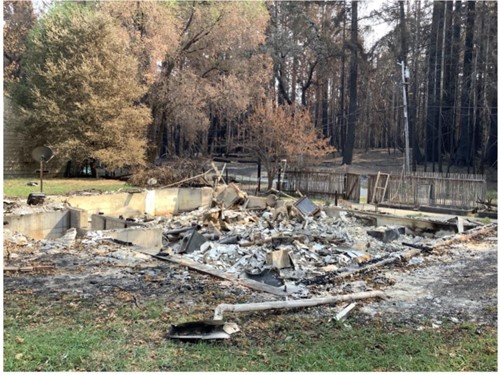 Lower Sky Meadow Residential Area in Big Basin Redwoods State Park was the first residential complex built in a California state park between 1941 and 1955, an era when the construction of employee housing in California State Parks became a priority and standardized plans were utilized in the parks for the first time. Due to the 2020 CZU Lightening Complex wildfire, the district was nearly destroyed. The tree lined road and Residence 10 are all that remains of the historic district. The property has ceased to meet the criteria for listing in the National Register because the association and features that made it originally eligible have been lost or destroyed.
Lower Sky Meadow Residential Area in Big Basin Redwoods State Park was the first residential complex built in a California state park between 1941 and 1955, an era when the construction of employee housing in California State Parks became a priority and standardized plans were utilized in the parks for the first time. Due to the 2020 CZU Lightening Complex wildfire, the district was nearly destroyed. The tree lined road and Residence 10 are all that remains of the historic district. The property has ceased to meet the criteria for listing in the National Register because the association and features that made it originally eligible have been lost or destroyed.
Properties nominated to the California Register of Historical Resources
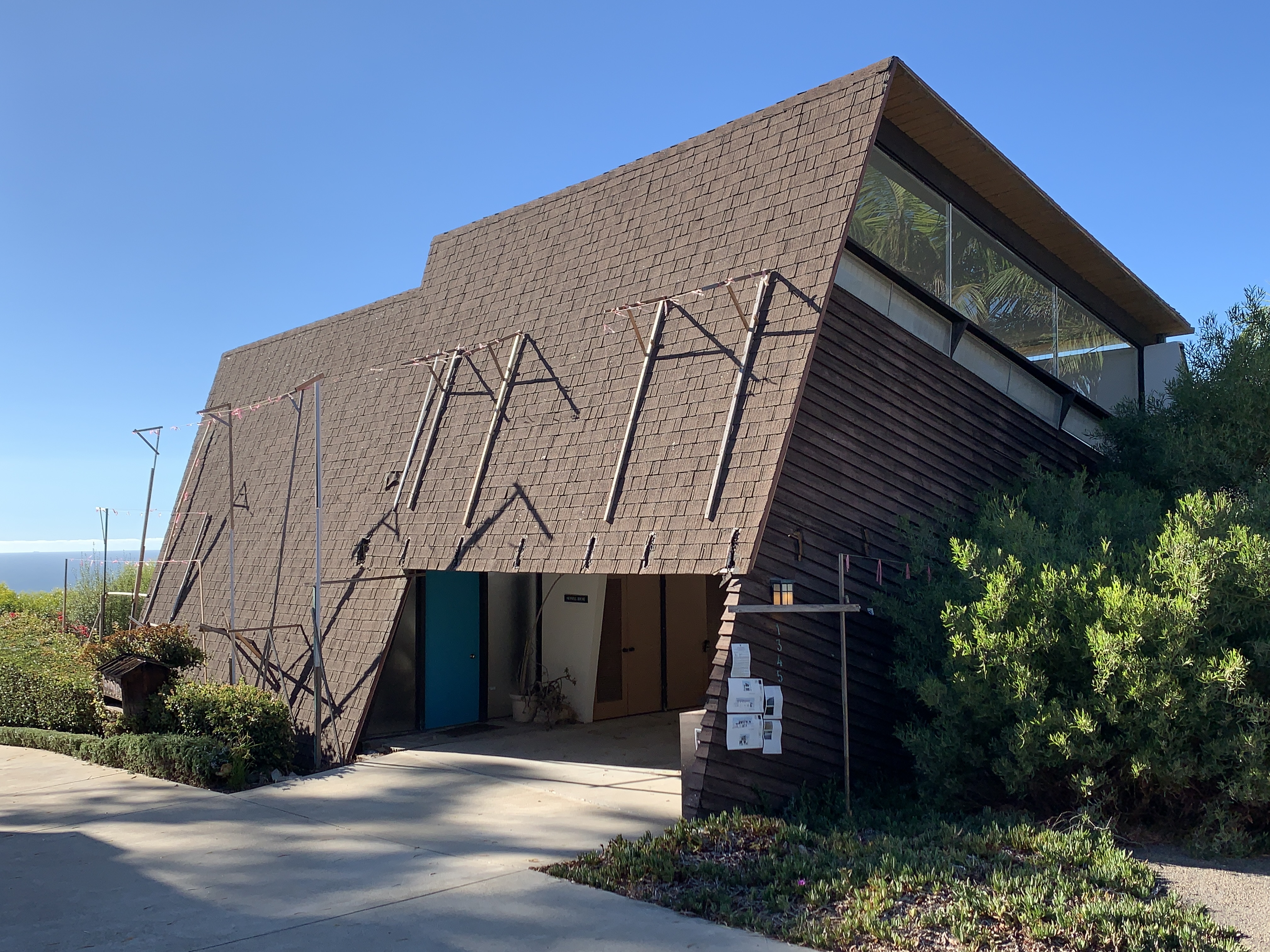
Properties nominated as Points of Historical Interest
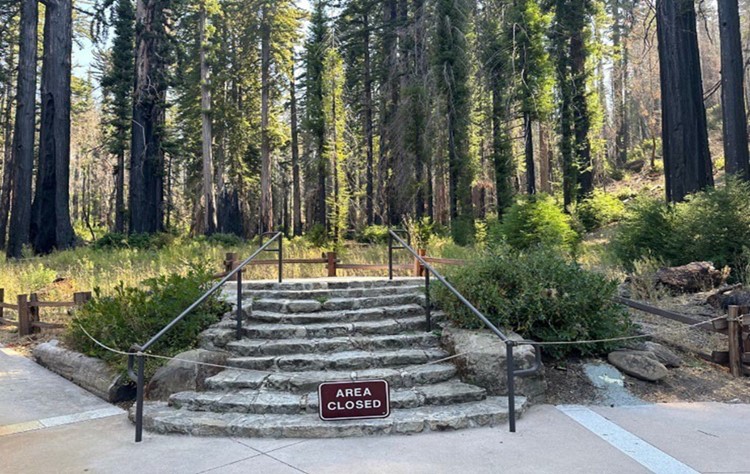 Site of Headquarters Administration Building documents the ruins of the Big Basin Redwoods State Park Visitors Center that remain after the 2020 CZU Lighting Complex Fire. A request to remove the historic building from the National Register of Historic Places is under review, with this Point of Historical Interest nomination intended to capture the history and significance associated with the contributions of the Civilian Conservation Corps in Big Basin Redwoods State Park and in California State Parks.
Site of Headquarters Administration Building documents the ruins of the Big Basin Redwoods State Park Visitors Center that remain after the 2020 CZU Lighting Complex Fire. A request to remove the historic building from the National Register of Historic Places is under review, with this Point of Historical Interest nomination intended to capture the history and significance associated with the contributions of the Civilian Conservation Corps in Big Basin Redwoods State Park and in California State Parks.
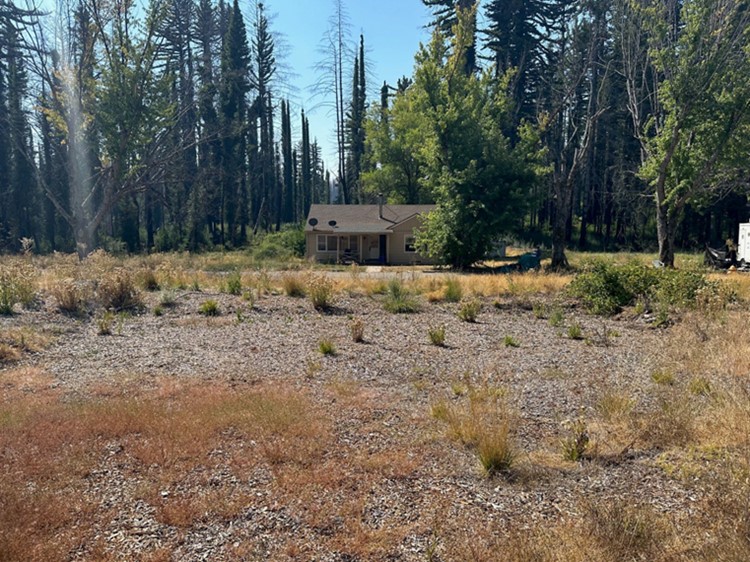 Site of Lower Sky Meadow Residential Area in Big Basin Redwoods State Park documents the lone residence and tree-lined Lower Sky Meadow Lane that survived the 2020 CZU Lighting Complex Fire. A request to remove the historic district from the National Register of Historic Places is under review, with this Point of Historical Interest nomination intended to capture the history and significance associated with development in Big Basin Redwoods State Park and in California State Parks.
Site of Lower Sky Meadow Residential Area in Big Basin Redwoods State Park documents the lone residence and tree-lined Lower Sky Meadow Lane that survived the 2020 CZU Lighting Complex Fire. A request to remove the historic district from the National Register of Historic Places is under review, with this Point of Historical Interest nomination intended to capture the history and significance associated with development in Big Basin Redwoods State Park and in California State Parks.

